100+ Questions to Ask After a Presentation
After a presentation, asking the right questions is key. It can help clarify what was shared, spark more discussion, and ensure everyone’s on the same page. Whether you’re the presenter or an audience member, knowing what to ask can make a big difference.
But how do you know which questions are worth asking? Not all questions are helpful or relevant, and you don’t want to miss out on a chance to gain more insight. So, what are the best questions to ask?
Don’t worry, though. I’ve got some simple yet powerful questions you can ask that will leave a great impression.
Table of Contents

If You Are the Presenter
If you are an audience member, frequently asked questions, final thoughts, questions to build audience connection.
- Which part of the presentation resonated with you the most?
- Did anything in the presentation inspire you to take action?
- How do you feel this information could benefit you personally?
- Were there any parts that reminded you of your own experiences?
- Did you find any particular section especially interesting or relatable?
- What emotions did the presentation evoke for you?
- How do you see this information fitting into your daily life?
- Did anything surprise you about the presentation’s content?
- How did the information challenge your existing knowledge or beliefs?
- What was your favorite takeaway from today’s presentation?
- Is there a topic you’d like me to explore further in the future?
- Did you feel the presentation style encouraged interaction?
- What question do you think I should have asked the audience during the presentation?
- How did the content align with your expectations of the topic?
- Was there a specific part that you felt connected to on a personal level?
Questions to Address Uncertainties
- Was there any part of the presentation that you didn’t fully understand?
- Are there any terms I used that need further explanation?
- Did the data or statistics seem clear, or would more context help?
- Were there any concepts that felt too complex or confusing?
- Should I go over any part of the presentation again to clarify?
- Was there enough background information for you to grasp the topic?
- Did any section feel rushed, making it hard to follow?
- Is there anything I can explain in more detail to make it clearer?
- Were the examples I used helpful, or should I include different ones?
- Is there anything you were hoping to learn that I didn’t cover?
- Would you like me to break down any specific points further?
- Were there any moments where you lost track of the main idea?
- Did any slide or visual aid need more explanation?
- Were there any conflicting ideas in the presentation that needed clearing up?
- Do you feel confident about the main takeaways, or should I revisit them?
Understanding and Retention Questions
- Can someone summarize the key points I made today?
- What is the one takeaway you’ll remember most from this presentation?
- How would you explain the main concept of this presentation to someone else?
- What are the three most important things you learned today?
- If I were to ask you about this topic in a week, what would you still remember?
- What part of the presentation do you think will stick with you the longest?
- Can you recall the first major point I made?
- How does the information I presented align with your current understanding of the topic?
- What new idea or concept did you learn that you didn’t know before?
- How would you apply the information presented to a real-life situation?
- Can someone point out the main takeaway from the second section of the presentation?
- What question do you think I should ask to test people’s understanding of the content?
- Can someone recall an example I used to explain a key concept?
- Which part of the presentation helped reinforce what you already knew?
- What information do you think you’ll need to review to grasp the content fully?
Questions for Self-Improvement
- What part of the presentation did you find least engaging?
- Were the visuals helpful or distracting?
- Did I pace the presentation well, or was it too fast/slow?
- Was there enough detail to make the content clear?
- Did the presentation feel too long or just right?
- How could I make the content more relatable?
- Was my tone appropriate for the topic?
- Did I make the main points clear and easy to follow?
- Were the transitions between topics smooth enough?
- How could I improve my delivery in future presentations?
- Was there anything in the presentation that felt unnecessary?
- Did the examples I used help explain the concepts?
- How could I make the presentation more engaging for the audience?
- Was my body language effective in keeping your attention?
- What suggestions do you have for improving this presentation?
Follow-Up Questions to the Topic
- Can you explain more about the key points you mentioned?
- Could you provide more examples to clarify your ideas?
- How does this information compare to other views on the subject?
- Could you expand on the background of this topic?
- What research or sources support your presentation?
- How does your perspective differ from other common approaches?
- Could you explain your thought process behind these conclusions?
- Can you talk more about how this information applies in broader contexts?
- What are some challenges in applying this concept?
- Could you provide more context regarding some of the data presented?
- How did you decide which aspects of the topic to focus on?
- Could you explore further how this impacts different fields or industries?
- How has this subject evolved over time?
- What additional resources would you recommend for further understanding?
- How do you see this topic developing in the future?
Challenging Questions for Critical Thinking
- What are the limitations of this approach?
- Have you considered alternative viewpoints or methods?
- What would critics of this approach say?
- Is there evidence that challenges your conclusions?
- How do you address situations where this idea doesn’t work as expected?
- What risks could arise if this idea is applied incorrectly?
- What factors might limit the success of this approach?
- Are there any ethical concerns related to this?
- What if the opposite of what you suggest is true?
- How would you adapt this idea to different scenarios?
- Are there exceptions where this concept wouldn’t apply?
- What external factors could influence the success of this idea?
- How does this fit into the larger conversation about this topic?
- If you had to critique your own ideas, what would you say?
- What should we consider before fully accepting this concept?
Application and Practicality Questions
- How can I apply what you’ve shared in practical situations?
- What are some first steps to putting this into action?
- Can you provide real-life examples of this being applied successfully?
- What should we consider when trying to implement this?
- What obstacles might arise when applying this information?
- How does this concept apply in different situations?
- How can this information be useful in everyday life?
- What tools or resources would help in applying these ideas?
- How do you recommend starting to use this information?
- How does this work for teams or individuals?
- Can you give an example of this working well in challenging conditions?
- How long does it usually take to see results from applying this?
- What are common mistakes to avoid when using this information?
- Are there real-world examples that show the success of this approach?
- What should someone know before trying to apply these ideas?
Should you end a presentation with any questions?
Yes, ending a presentation with a Q&A segment is a common and effective practice. It allows the audience to clarify any doubts and provides a chance for interaction. It shows that you are open to feedback and willing to engage further, which can strengthen your connection with the audience.
How do you start a Q&A session after a presentation?
Transition smoothly by inviting the audience to ask their questions. You can say something like , “Thank you for listening. Now, I’d be happy to take any questions you have.” Make eye contact, stay relaxed, and give the audience time to formulate their questions before jumping in to answer.
What should you avoid when asking questions after a presentation?
Avoid overly personal questions or those that might seem confrontational. The goal is to enhance understanding and discussion, not to challenge the presenter in a negative way.
How should a presenter handle questions they cannot answer?
It’s important for presenters to be honest if they don’t have an answer. They can offer to find the information and follow up or suggest resources where the audience might find the answer themselves.
Is there a limit to how many questions one should ask after a presentation?
While there is no set limit, it’s respectful to be mindful of time and the number of other audience members who might also have questions. Asking one or two thoughtful questions is generally appropriate.
Asking the right questions after a presentation can open the door to better understanding and stronger connections. Whether you’re presenting or listening, thoughtful questions help everyone learn more and keep the conversation going.
So, next time you’re in a presentation, don’t hesitate to speak up. Your questions could make all the difference in how well the message is understood and remembered.
How useful was this post?
Click on a star to rate it!
As you found this post useful...
Share it on social media!
We are sorry that this post was not useful for you!
Let us improve this post!
Tell us how we can improve this post?

Bea Mariel Saulo
Bea is an editor and writer with a passion for literature and self-improvement. Her ability to combine these two interests enables her to write informative and thought-provoking articles that positively impact society. She enjoys reading stories and listening to music in her spare time.

30 Examples: How to Conclude a Presentation (Effective Closing Techniques)
By Status.net Editorial Team on March 4, 2024 — 9 minutes to read
Ending a presentation on a high note is a skill that can set you apart from the rest. It’s the final chance to leave an impact on your audience, ensuring they walk away with the key messages embedded in their minds. This moment is about driving your points home and making sure they resonate. Crafting a memorable closing isn’t just about summarizing key points, though that’s part of it, but also about providing value that sticks with your listeners long after they’ve left the room.
Crafting Your Core Message
To leave a lasting impression, your presentation’s conclusion should clearly reflect your core message. This is your chance to reinforce the takeaways and leave the audience thinking about your presentation long after it ends.
Identifying Key Points
Start by recognizing what you want your audience to remember. Think about the main ideas that shaped your talk. Make a list like this:
- The problem your presentation addresses.
- The evidence that supports your argument.
- The solution you propose or the action you want the audience to take.
These key points become the pillars of your core message.
Contextualizing the Presentation
Provide context by briefly relating back to the content of the whole presentation. For example:
- Reference a statistic you shared in the opening, and how it ties into the conclusion.
- Mention a case study that underlines the importance of your message.
Connecting these elements gives your message cohesion and makes your conclusion resonate with the framework of your presentation.
30 Example Phrases: How to Conclude a Presentation
- 1. “In summary, let’s revisit the key takeaways from today’s presentation.”
- 2. “Thank you for your attention. Let’s move forward together.”
- 3. “That brings us to the end. I’m open to any questions you may have.”
- 4. “I’ll leave you with this final thought to ponder as we conclude.”
- 5. “Let’s recap the main points before we wrap up.”
- 6. “I appreciate your engagement. Now, let’s turn these ideas into action.”
- 7. “We’ve covered a lot today. To conclude, remember these crucial points.”
- 8. “As we reach the end, I’d like to emphasize our call to action.”
- 9. “Before we close, let’s quickly review what we’ve learned.”
- 10. “Thank you for joining me on this journey. I look forward to our next steps.”
- 11. “In closing, I’d like to thank everyone for their participation.”
- 12. “Let’s conclude with a reminder of the impact we can make together.”
- 13. “To wrap up our session, here’s a brief summary of our discussion.”
- 14. “I’m grateful for the opportunity to present to you. Any final thoughts?”
- 15. “And that’s a wrap. I welcome any final questions or comments.”
- 16. “As we conclude, let’s remember the objectives we’ve set today.”
- 17. “Thank you for your time. Let’s apply these insights to achieve success.”
- 18. “In conclusion, your feedback is valuable, and I’m here to listen.”
- 19. “Before we part, let’s take a moment to reflect on our key messages.”
- 20. “I’ll end with an invitation for all of us to take the next step.”
- 21. “As we close, let’s commit to the goals we’ve outlined today.”
- 22. “Thank you for your attention. Let’s keep the conversation going.”
- 23. “In conclusion, let’s make a difference, starting now.”
- 24. “I’ll leave you with these final words to consider as we end our time together.”
- 25. “Before we conclude, remember that change starts with our actions today.”
- 26. “Thank you for the lively discussion. Let’s continue to build on these ideas.”
- 27. “As we wrap up, I encourage you to reach out with any further questions.”
- 28. “In closing, I’d like to express my gratitude for your valuable input.”
- 29. “Let’s conclude on a high note and take these learnings forward.”
- 30. “Thank you for your time today. Let’s end with a commitment to progress.”
Summarizing the Main Points
When you reach the end of your presentation, summarizing the main points helps your audience retain the important information you’ve shared. Crafting a memorable summary enables your listeners to walk away with a clear understanding of your message.
Effective Methods of Summarization
To effectively summarize your presentation, you need to distill complex information into concise, digestible pieces. Start by revisiting the overarching theme of your talk and then narrow down to the core messages. Use plain language and imagery to make the enduring ideas stick. Here are some examples of how to do this:
- Use analogies that relate to common experiences to recap complex concepts.
- Incorporate visuals or gestures that reinforce your main arguments.
The Rule of Three
The Rule of Three is a classic writing and communication principle. It means presenting ideas in a trio, which is a pattern that’s easy for people to understand and remember. For instance, you might say, “Our plan will save time, cut costs, and improve quality.” This structure has a pleasing rhythm and makes the content more memorable. Some examples include:
- “This software is fast, user-friendly, and secure.”
- Pointing out a product’s “durability, affordability, and eco-friendliness.”
Reiterating the Main Points
Finally, you want to circle back to the key takeaways of your presentation. Rephrase your main points without introducing new information. This reinforcement supports your audience’s memory and understanding of the material. You might summarize key takeaways like this:
- Mention the problem you addressed, the solution you propose, and the benefits of this solution.
- Highlighting the outcomes of adopting your strategy: higher efficiency, greater satisfaction, and increased revenue.
Creating a Strong Conclusion
The final moments of your presentation are your chance to leave your audience with a powerful lasting impression. A strong conclusion is more than just summarizing—it’s your opportunity to invoke thought, inspire action, and make your message memorable.
Incorporating a Call to Action
A call to action is your parting request to your audience. You want to inspire them to take a specific action or think differently as a result of what they’ve heard. To do this effectively:
- Be clear about what you’re asking.
- Explain why their action is needed.
- Make it as simple as possible for them to take the next steps.
Example Phrases:
- “Start making a difference today by…”
- “Join us in this effort by…”
- “Take the leap and commit to…”
Leaving a Lasting Impression
End your presentation with something memorable. This can be a powerful quote, an inspirational statement, or a compelling story that underscores your main points. The goal here is to resonate with your audience on an emotional level so that your message sticks with them long after they leave.
- “In the words of [Influential Person], ‘…'”
- “Imagine a world where…”
- “This is more than just [Topic]; it’s about…”
Enhancing Audience Engagement
To hold your audience’s attention and ensure they leave with a lasting impression of your presentation, fostering interaction is key.
Q&A Sessions
It’s important to integrate a Q&A session because it allows for direct communication between you and your audience. This interactive segment helps clarify any uncertainties and encourages active participation. Plan for this by designating a time slot towards the end of your presentation and invite questions that promote discussion.
- “I’d love to hear your thoughts; what questions do you have?”
- “Let’s dive into any questions you might have. Who would like to start?”
- “Feel free to ask any questions, whether they’re clarifications or deeper inquiries about the topic.”
Encouraging Audience Participation
Getting your audience involved can transform a good presentation into a great one. Use open-ended questions that provoke thought and allow audience members to reflect on how your content relates to them. Additionally, inviting volunteers to participate in a demonstration or share their experiences keeps everyone engaged and adds a personal touch to your talk.
- “Could someone give me an example of how you’ve encountered this in your work?”
- “I’d appreciate a volunteer to help demonstrate this concept. Who’s interested?”
- “How do you see this information impacting your daily tasks? Let’s discuss!”
Delivering a Persuasive Ending
At the end of your presentation, you have the power to leave a lasting impact on your audience. A persuasive ending can drive home your key message and encourage action.
Sales and Persuasion Tactics
When you’re concluding a presentation with the goal of selling a product or idea, employ carefully chosen sales and persuasion tactics. One method is to summarize the key benefits of your offering, reminding your audience why it’s important to act. For example, if you’ve just presented a new software tool, recap how it will save time and increase productivity. Another tactic is the ‘call to action’, which should be clear and direct, such as “Start your free trial today to experience the benefits first-hand!” Furthermore, using a touch of urgency, like “Offer expires soon!”, can nudge your audience to act promptly.
Final Impressions and Professionalism
Your closing statement is a chance to solidify your professional image and leave a positive impression. It’s important to display confidence and poise. Consider thanking your audience for their time and offering to answer any questions. Make sure to end on a high note by summarizing your message in a concise and memorable way. If your topic was on renewable energy, you might conclude by saying, “Let’s take a leap towards a greener future by adopting these solutions today.” This reinforces your main points and encourages your listeners to think or act differently when they leave.
Frequently Asked Questions
What are some creative strategies for ending a presentation memorably.
To end your presentation in a memorable way, consider incorporating a call to action that engages your audience to take the next step. Another strategy is to finish with a thought-provoking question or a surprising fact that resonates with your listeners.
Can you suggest some powerful quotes suitable for concluding a presentation?
Yes, using a quote can be very effective. For example, Maya Angelou’s “People will forget what you said, people will forget what you did, but people will never forget how you made them feel,” can reinforce the emotional impact of your presentation.
What is an effective way to write a conclusion that summarizes a presentation?
An effective conclusion should recap the main points succinctly, highlighting what you want your audience to remember. A good way to conclude is by restating your thesis and then briefly summarizing the supporting points you made.
As a student, how can I leave a strong impression with my presentation’s closing remarks?
To leave a strong impression, consider sharing a personal anecdote related to your topic that demonstrates passion and conviction. This helps humanize your content and makes the message more relatable to your audience.
How can I appropriately thank my audience at the close of my presentation?
A simple and sincere expression of gratitude is always appropriate. You might say, “Thank you for your attention and engagement today,” to convey appreciation while also acknowledging their participation.
What are some examples of a compelling closing sentence in a presentation?
A compelling closing sentence could be something like, “Together, let’s take the leap towards a greener future,” if you’re presenting on sustainability. This sentence is impactful, calls for united action, and leaves your audience with a clear message.
- 30 Examples of Teamwork Self Evaluation Comments
- Effective Nonverbal Communication in the Workplace (Examples)
- 30 Examples of Follow-Up Email Subject Lines
- 5 Effective Examples: How to Write a Two-Week Notice
- 2 Examples of an Effective and Warm Letter of Welcome
- 8 Examples of Effective Interview Confirmation Emails
90 Questions to Ask After a Presentation
Have you ever found yourself mulling over a presentation, wishing you had a treasure trove of questions to uncover the speaker’s insights and wisdom fully?
The right question isn’t just a follow-up; it’s a key that unlocks a deeper connection with the topic. This guide is designed to arm you with a curated collection of inquiries that will enhance your understanding, invite valuable discourse, and help you to apply what you’ve learned.
Let’s dive into the art of the post-presentation conversation and transform every ending slide into an opportunity for continued learning and engagement.
Table of Contents
Clarifying Understanding
- Could you elaborate on the main thesis of your presentation?
- What inspired the topic of your presentation?
- Can you summarize the key points you’d like us to take away?
- Is there an aspect of your presentation you think deserves deeper understanding?
- How does your presentation relate to current trends or issues in the field?
- Were there any counterarguments or challenges to your points that you didn’t mention?
- In what way does your presentation build on or differ from existing research?
- Could you clarify the methodology behind your study or findings?
- How would you explain the significance of your findings to a layman?
- Is there a particular slide or section you can revisit for further clarification?
- Could you give an example that illustrates your point about [specific detail]?
- What were the assumptions underlying your analysis or argument?
- How do definitions used in your presentation compare to industry-standard ones?
- Can you clarify the statistical significance of your data?
- Where might we find more information on this topic if we wish to understand it better?
Digging Deeper into Content
- Can you expand on how your findings compare to similar studies?
- How might emerging technologies impact the relevance of your findings in the future?
- Are there ethical considerations linked to your presentation topic?
- What are the limitations of your research, and how can they be addressed in the future?
- How can your research be applied in other fields or industries?
- In what ways do your findings challenge conventional wisdom?
- Could you walk us through the process of how you collected your data?
- How would different theoretical frameworks affect the interpretation of your results?
- What unanswered questions remain after your presentation?
- How do you expect the discussion on this topic to evolve in the next five years?
- What are the implications of your findings for policy or practice?
- How does cultural context play into the outcomes of your research?
- Can you discuss any relevant case studies that connect to your presentation?
- What follow-up research would you recommend based on your work?
- In your research, what was the most surprising discovery you made?
Gathering Practical Applications
- How can we apply your research findings in our everyday work?
- What steps can organizations take to implement your recommendations?
- Can you suggest tools or resources for applying the insights from your presentation?
- How might your research influence day-to-day decision-making?
- Could you provide a real-world example where your findings have been put into practice?
- What are the short-term and long-term benefits of applying your findings?
- Who stands to benefit most from the practical applications of your research?
- Are there certain industries or sectors where your findings are particularly relevant?
- How will applying your findings change existing systems or processes?
- What are some common obstacles to implementing your research, and how can they be overcome?
- How do you recommend staying up-to-date on applications in your research area?
- Can you suggest partner organizations or groups that are working on applying these concepts?
- What measures can be put in place to evaluate the efficacy of applying your research?
- How do you foresee your findings impacting future innovations?
- What action can individuals take to support the practical application of your research?
Providing Constructive Feedback
- I found [specific point] very compelling; have you considered expanding on this?
- Your presentation makes a strong case for [topic]; how could it be enhanced with additional data?
- I noticed [aspect] during your presentation; could this be a point for further refinement?
- The visual aids were helpful; have you thought about using more interactive elements?
- The section on [specific area] was very informative; how can it be made more accessible for beginners in the field?
- In terms of delivery, would you be open to exploring other formats for your presentation?
- Your research draws important conclusions; how else might you support them?
- The pacing of your presentation was effective; could you use a similar approach to emphasize other key points?
- Given the complexity of your topic, have you considered a follow-up session or workshop?
- What additional resources or readings would you recommend to enhance our understanding of your topic?
- Your narrative was engaging; might there be a way to incorporate more storytelling?
- How might audience participation be facilitated in future presentations to enhance understanding?
- Were there alternative viewpoints you debated including in your presentation?
- How did you decide on the structure of your presentation, and what could be changed to improve it?
- Is there a component of your research that you feel requires more visibility or discussion?
Fostering Engagement and Discussion
- What questions do you have for the audience that might help further the discussion?
- How can the audience keep the conversation going outside of this presentation?
- Are there forums or networks where this topic is actively discussed?
- Could you propose a thought experiment or hypothetical scenario for us to consider?
- How can we encourage more interdisciplinary dialogue on this subject?
- What common misconceptions should we address to clear up understanding?
- In your opinion, what are the most controversial aspects of your topic?
- How can we contribute to the body of research or thought around this subject?
- What role can non-experts play in the discussion of these findings?
- Can you suggest a way to create a community or collective around this area of research?
- How would you like to see this information shared or disseminated?
- What would be an ideal outcome of the discussions that stem from this presentation?
- Are there collaborative projects or initiatives we could start as a result of your findings?
- Would you be interested in hosting a series of discussions to delve deeper into certain aspects?
- How do you suggest we handle differing opinions or debates that arise from your topic?
Exploring Next Steps and Actions
- Based on your research, what should be our immediate action?
- What are the first steps to be taken for those who want to delve deeper into this topic?
- Who should be contacted or involved in further development of this topic?
- Are there upcoming events or conferences where this topic will be featured?
- What can we do as individuals to further the research or findings you presented?
- How can we best track the progress and development in this area?
- What practical steps would you recommend for a follow-up study or project?
- Could you outline potential obstacles we might face in advancing this topic and how to overcome them?
- Are there policy changes or advocacy needed to move this conversation forward?
- How can the general public be engaged in the action steps related to your findings?
- What are the most critical areas for immediate exploration or action?
- Is there a need for collaboration with other disciplines to advance this topic?
- How can educators integrate your findings into their curriculum or teaching?
- What funding opportunities should be looked into to support further research?
- How can we measure the impact of the actions taken as a result of your presentation?
Frequently Asked Questions
Can i provide feedback on the presentation style as well as the content.
Yes, but always aim to be constructive and polite. Feedback on presentation style can be as valuable as feedback on content.
What should I do if my question isn’t answered during the Q&A session?
If time runs out, try approaching the presenter afterward or sending a follow-up email with your question.
How can I encourage a discussion rather than just a Q&A session?
Ask open-ended questions that invite the presenter or audience members to share thoughts and perspectives, thus fostering a more interactive dialogue.
Final Thoughts
And there you have it—a comprehensive guide to quenching your intellectual curiosity and contributing valuable insights after a presentation. From uncovering the nuances of presented content to setting the stage for future collaboration, asking these questions ensures that no stone is left unturned.
Remember, the journey of understanding and exploration doesn’t end with the closing slide; it’s merely the beginning. Now, go forth and turn those questions into conversations that matter!
How useful was this post?
Click on a star to rate it!
As you found this post useful...
Share it on social media!
We are sorry that this post was not useful for you!
Let us improve this post!
Tell us how we can improve this post?

Bea Mariel Saulo
- SUGGESTED TOPICS
- The Magazine
- Newsletters
- Managing Yourself
- Managing Teams
- Work-life Balance
- The Big Idea
- Data & Visuals
- Case Selections
- HBR Learning
- Topic Feeds
- Account Settings
- Email Preferences
How to Nail the Q&A After Your Presentation
- Caroline Webb

You can’t rehearse it, but you can be prepared.
When preparing to give a presentation, most professionals focus their energy on the main portion of their talk — their key messages, slides, and takeaways. And far too few people think through how you’ll answer questions at the end of the presentation can be a big mistake. If you’re worried about how to hand the Q&A, there are several things you can do. Change your mindset. Rather than dreading this part of the talk, develop an appreciation for the conversation. It’s a good thing that people have follow-up questions and want to further engage with your content. Beforehand, think through the types of questions audience members might ask. Put yourself in your shoes and ask yourself what concerns they might have about how your message impacts their job. Then, when you’re asked a question, especially one that might be contentious, start your answer by focusing on where you and the person asking it agree. This makes the person feel seen and connected to you. And if you’re asked a question out of left field, be curious. Ask follow-up questions that help you understand what they’re getting at and where they’re coming from.
If you’re not a huge fan of public speaking , you’re in good company. It’s such a widely shared source of anxiety that when psychologists want to induce unpleasant stress in a person for experimental purposes, they often use a public speaking task called the Trier Social Stress Test . The test requires people to give a talk and do sums in front of a panel of impassive listeners, and it reliably generates stress markers such as a faster heart rate, raised cortisol levels, and “enhanced skin conductance,” which is the polite way of saying sweaty palms.
- Caroline Webb is the author of How to Have a Good Day: Harness the Power of Behavioral Science to Transform Your Working Life . She is also CEO of coaching firm Sevenshift , and a senior adviser to McKinsey & Company. Follow her on Facebook or Google + . caroline_webb_
Partner Center

Improve your practice.
Enhance your soft skills with a range of award-winning courses.
Guide for Handling Questions after a Presentation
October 19, 2017 - Dom Barnard
The questions at the end of a presentation can be terrifying for many speakers as they can’t be controlled and are hard to prepare for. However, questions form an important part of the presentation for the whole audience as they allow for clarification and consolidation of learning.
The presenter can enhance the usefulness of the question and answer session by treating it as a formal part of the presentation that requires as much careful planning and control as the delivery of the core material.
Identify possible questions and scope in your preparation
The background work that you undertook whilst planning your presentation is the key to handling questions effectively and understanding what type of audience you’ll be faced with. If you have defined a focus for your presentation and have explored this thoroughly in your research and planning, you are more likely to be able to confidently respond to questions.
When planning your presentation, you will need to prepare prompts for questions that are open and straightforward, for example saying “That’s the end of my presentation. I’ll be taking questions for the next 10 minutes”.
You might also want to define topics for discussion before taking questions, by stating the areas you’re willing to field questions in. Your preparation will help you identify topics you are not confident with and want to avoid in the questioning.

Set some rules for asking questions
At the start of your presentation, make it clear when you would prefer to deal with questions – as you go along or at the end of the presentation.
Some speakers prefer questions to be raised as they arise during the presentation. The advantage of this approach is that any misunderstandings can be dealt with immediately. However, there is also a danger that the question will disrupt or distract the speaker, or that questions are raised that would have been covered later in the presentation.
If you leave questions until the end, plan to leave plenty of time for questions so that the audience doesn’t feel rushed.
Framework for responding to questions
Answering questions under pressure can make you say things you shouldn’t have – the nerves can force you to give an inappropriate response. In your panic you might have misinterpreted the question or given away company information that was sensitive. Use the following framework to help you respond effectively to your audience.
Practice answering AI-generated questions on your speech or presentation with VirtualSpeech .
1. Listen to the whole question
You don’t have to answer a question immediately. Pause for a few seconds, actively listen to all parts of the question and think about the best way to answer.
Frequently questions can change direction at the last moment, particularly if the questioner is thinking on their feet. This can throw you if you have already started to prepare an answer. Remember that questioners will frequently try to make a point whilst asking their question – it’s therefore important to both hear the content of the question and try to decipher the questioner’s intention.
2. Understand the context
If you are worried that you haven’t understood a question, ask them to clarify what they mean. Check for confirmation by paraphrasing the question back to the questioner – “You want me to list the improvements of X?”.
3. Involve the whole audience
It is important to remember that even though you are taking a question from one member of the audience, you are still responsible for the interest of the other audience members. This is particularly important in large groups as the audience will become bored if the presentation descends into a series of one-to-one discussions.
To involve the rest of the audience, make sure the whole audience has heard and understood the question by repeating it or paraphrasing it to the audience.
4. Respond concisely
When you reply to a question, direct your answer to both the questioner and other members of the audience. Try to keep your responses as focused as possible, leaving space for other questions. To avoid going into too much detail, check back with the questioner to see if you have answered their query – “Does that answer your question in enough detail?”.
We’ll cover different ways to respond in a later section.
5. Allow follow-up questions via email
You can also encourage your audience to ask questions after the event has finished by providing your email address. This shows a high level of respect for your audience and implies that the topic still has much further scope for enquiry.
Two good resources for handling questions
- What’s the art of answering a tricky question?
- Dodging the Question
Practice Answering Questions
Practice answering questions after your presentation using a 4 step process. Learn More
Options for answering the question
There are five possible choices depending on how well you understand and can answer the question. It’s okay to say that you don’t know the answer to something. This can add to your credibility instead of trying to waffle through an answer you don’t really know.
If you have a good answer for the question from the audience, go ahead and answer it in a short and clear message.
Ask a question back the audience member, such as “Can you clarify what you mean by that”. You can also attack the question if it is not related to the issue, factually inaccurate, personal or based on false assumptions. Be careful with this method.
Ask the question back to the audience or pass it to another panel member if possible. If suitable, another technique is to imply the question has been asked already, with you stating you don’t want to cover old ground.
Tell the audience member you will talk to them after the event. This gives you more time to think of a good answer and there is less pressure to give a perfect answer.
Or mention that that point is coming up in a slide.
This involves answering the question but changing the subject. You can also give a partial answer or give a negative answer, saying that something else will happen instead.
Avoid answering questions that fall outside of the remit of your talk: “I’m afraid that really falls outside of my objectives for today’s presentation. Perhaps we can resume discussion of that particular point later?”

Diagram Explained : Once you receive a question, you’ll have a few moments to think about it and reframe it in a way that makes sense to you. This will give you five choices on how to react – you can answer, reflect, deflect, defer or change the scope of the question. Once you’ve answered concisely, you can then follow up to check if the person asking the question is satisfied and then continue with the presentation.
Strategies to use when struggling to answer
Here are some strategies to use when you are struggling to answer the question posed to you. For more information, read this article on Dodging the Question .
- Acknowledge the question without answering it – “That’s a good question, let’s consider the impact by looking at…”
- The question fails to tackle the important issue.
- The question is based on a false assumption.
- The question is factually inaccurate.
- The question is too personal or objectionable.
- Decline to answer. Refuse to answer on the basis that it is not your area of responsibility or it is sensitive company information – “You will have to ask [name] because I wasn’t involved in that particular project.”
- Partial answer
- Start to answer but change the subject
- Negative answer. You state what won’t happen instead of what will happen
- Answer a similar question
- State or imply the question has already been answered – “We’ve already covered that topic”
Things to avoid
When handling questions and answers, you will still need to be as professional as you have been for the main delivery of your presentation. There are some common dangers to avoid.
Answering the question you wished you’d been asked
A common trick played by politicians, this strategy ignores the precise nature of the question and uses a predetermined answer to the broad topic area. If handled poorly, this technique is very obvious to the audience and frustrating to the questioner.
Giving a lengthy response
This is the process whereby you make a lengthy response, including all the information you’d left out in planning the main presentation. Your unplanned response will be unstructured and rambling, so keep things focused and brief. If you find yourself rambling, ask them to talk to you after.

Passing the blame
Passing the blame to others comes across as weak and evasive. If an idea from the audience is a good one, acknowledge its value. If it isn’t, make a polite rebuttal and move on.
Defensive answers
Occasionally, questions can really put you on the spot, but it is important to remain calm and in control. An aggressive or defensive reply will be seen as weakness on your part and will spoil the effect of an otherwise successful presentation.
Handling difficult questions
It is important not to start responding to a difficult question before you have thought about the answer. Repeating the question and asking for clarification will help create some space for your thoughts.
Sometimes you will need to think about a question for a moment before responding. You may be able to buy a little bit of thinking time to help focus your response. Useful strategies include searching for an appropriate visual aid to help focus your response or simply pausing for a moment or two to think. For even more time, suggest that you’ll come back to the topic later (but don’t forget to do this).
7 myths when answering tough questions during presentations
Sometimes questions are too difficult to answer. Don’t worry about admitting that you don’t know something or haven’t considered an alternative approach. An enthusiastic “That’s an interesting idea, I’d not thought of that” is much more positive than a mumbled “I don’t know ”. Remember that a presentation is a two-way process and it is important to show that you are learning from your audience as well.
Finally, you can come across a questioner who disagrees strongly with your argument. Although this can feel very awkward, remember that you are still responsible for the whole audience and that you cannot allocate all of your question time to one individual.
If you feel that you have answered the initial question, announce that you will move on and suggest that you might continue discussion after the presentation. If the questioner persists, assert your position calmly by saying “I’m afraid I need to move on”.
You can read more on this topic here: Responding to questions effectively (PDF)
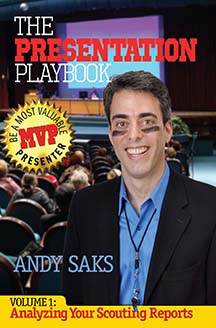
NOW AVAILABLE! The Presentation Playbook Series
- Trade Show Presenter
- Testimonials
- Trade Show Staffing
- Sample Videos
- Seminar Speaker
Spark's Presentation & Public Speaking Blog
- 7 Tips to Encourage Audience Questions in Your Presentation Q&A
September 19, 2017
Ever seen a presenter ask “Any questions?” at the end of their presentation, and heard only crickets from the audience?
In my work as a professional emcee and trade show presenter , I see it often, and it always makes me cringe because it’s so awkward, and so completely avoidable.
Asking for questions and getting none kills a presentation’s momentum. It usually goes like this:
- The presenter, having run out of content, asks “Any questions?”
- The audience, having no questions, freezes in place.
- Everyone thinks they hear crickets, though there are none in the room.
- The presenter, getting no questions, says, “OK, I guess I’m done.”
OUCH. How’d that happen?
Chances are, you caught your audience by surprise. They didn’t know you’d take questions, so they didn’t think of any. When you asked, you caught them off guard.
I want your next presentation to end with a bang, not a whimper. So try these tips to encourage questions:
1. PREPPING YOUR Q&A: PRIME YOUR AUDIENCE
> TIP THEM OFF EARLY: As you start your presentation, tell your audience: “I’ll take all your questions at the end, so write down your questions as you think of them along the way.” That’ll get them active thinking of questions throughout your presentation.
> REMIND THEM: A few minutes before you take questions, say: “I’ve got one more slide to cover, then I’ll take your questions.” That’ll remind them to think of some questions if they haven’t yet.
2. STARTING YOUR Q&A: GIVE THEM A NUDGE
> LEAVE ROOM: Starting a Q&A with little or no time left discourages questions; your audience wants to leave on time too! Instead, carve out 5-10 minutes or more for questions (and cut some content to make room if needed; your audience prioritizes the information they want to get over the information you want to share).
> USE A PLANT: Have a “plant” in the audience who’ll ask the first question (one you’re comfortable answering), which encourages other audience members to ask (and saves them the awkwardness of going first) and gives them time to think of something to ask.
> CHANGE YOUR PHRASING: Your audience may interpret the phrase “Any questions?” as a sign that you don’t expect or even want questions, which discourages them from asking. Instead, encourage questions by phrasing your question with a more upbeat, expectant tone: “Who’s got a question?” or “Who’d like to go first?”
> ASK IT YOURSELF: Ask yourself a common question: “One question I get often is…” Then answer it. Again, this encourages the audience to follow suit, and gives them more time to think of a question.
3. ENDING YOUR Q&A: ADD THAT BANG!
Q&A or not, ending your presentation by saying you’re ending your presentation (“OK, I guess I’m done”) will end your presentation with a whimper. You can easily replace that whimper with a “bang” by restating your main takeaway and thanking your audience:
“Folks, I hope my presentation has shown you that when it’s raining and you want to stay dry outside, use an umbrella! You won’t regret it. Thanks so much for your time.”
And thank you so much for your time!
by Andy Saks
Posted in: Sparky Says: Presentation & Public Speaking Tips | No Comments
Add your comment
Leave a Reply Cancel reply
Your email address will not be published. Required fields are marked *
Save my name, email, and website in this browser for the next time I comment.
Notify me of follow-up comments by email.
Notify me of new posts by email.
Search Spark’s Blog
Spark news: coming (& recent) attractions.
- Spark booth presenter shines at Las Vegas tech show
- Navy SEAL fundraiser books charity auctioneer Andy Saks
- Boston awards event books Spark master of ceremonies
- Read all Coming (& Recent) Attractions
Sparky Says: Presentation & Public Speaking Tips
- 10 Tips to Boost Donations at Your Fund the Need / Paddle Raise
- 10 PowerPoint Alternatives That Make Your Presentation Memorable
- Read all Sparky Says (Speaking Tips)
Presentation Frequently Asked Questions
- Trade show presenter 101: Your guide to booking a booth presenter (Part 1)
- Sales presentation skills: How much is your pitch actually worth?
- How do I hire the right trade show presenter?
- Read all Presentation FAQ
Spark's Client Success Stories
- Emcee tips: How Spark’s master of ceremonies made AT&T’s awards dinner fun
- Trade show booth ideas: How to get the most value from your presenter
- Trade show booth ideas: Recycle your presentation script
- Read all Spark Success Stories
Spark Presentations
Andy Saks, Owner & Lead Speaker
781-454-7600 | Email | Contact page
Don't miss exclusive Spark deals! Sign up for your Spark e-newsletter today.

8 tips for encouraging questions in your presentation
by Olivia Mitchell | 8 comments

Most of us would like people in the audience to ask questions. A lively Q&A session is stimulating and engaging for the audience. But sometimes you ask for questions, and you’re just met with blank gazes back from your audience. It’s a let-down and your presentation ends on a sour note.
Questions from the audience are like young fragile seedlings – they need nurturing. Consider when you’re in the audience – what stages do you have to mentally go through in order to ask a question? It might go something like this:

So as the presenter, you need to nurture your audience’s questions through these four stages. Here are 8 tips to help make them through:
1. Pitch your presentation at the right level for your audience
The first stage of questions is birth – they have to be born in your audience’s mind. If your presentation is too simple for the level of knowledge in your audience – it’s all material they’ve covered before – they won’t have any questions. Conversly, if it’s too complicated for them, they’ll turn off rather than risk asking a question which might make them look stupid.
2. Don’t cover every aspect of your topic in the presentation
If you cover everything there is to know on the topic – you won’t leave room for questions. So don’t be exhaustive in your coverage.
3. Let your audience know you would like questions and when to ask them
Near the beginning of your presentation let your audience know that you welcome questions. Then let them know when to ask them. There are a number of options:
Take questions throughout your presentation
Tell people they can interrupt you throughout the presentation to ask questions as they come to mind. This has several benefits:
- people won’t have to remember their question till later
- if they’re uncertain about something they can get that clarified at the time
- questions on a particular issue are dealt with at the same time that you’re discussing that issue.
The downside to this strategy is that it can take you off track if people ask irrelevant questions or questions that you’re going to cover later in the presentation. If you find it tricky to get back into the flow of your presentation after an interruption it may not be the best strategy for you. Finally, it can throw the timing of your presentation if people ask a lot of questions on a particular issue. This strategy is best used in longer presentations and training courses where timing is less critical.
Take questions at defined points of your presentation
Tell people you will have an opportunity for questions after you’ve finished each part of your presentation. This option is a useful halfway point between having questions throughout and leaving them till the end of the presentation. You can also decide how long to take questions for during each break in your presentation, and so control the timing better.
4. Let them ask a question as soon as they have one
If you’re serious about ensuring that people get their questions answered, invite people to interrupt you and ask their question. It’s the only way to ensure this. That’s when the question is burning for them. The longer you make people wait, the less likely they are to remember it. Once you’ve moved onto a new topic, their question will seem less relevant. Joey Asher from Talking Points blog says:
Questions aren’t to be feared. They’re to be embraced. There’s no better way to connect with an audience than to allow them free rein to ask as many questions as they want.
5. Invite people to write down their questions as they think of them
If you don’t want to take questions throughout, you can help people remember their questions by suggesting that they write them down.
6. Validate every question
It takes courage to ask a question. It’s public speaking – just not from the front of the room. People are held back by wondering if their question is stupid or did they miss something and you already answered it. So you need to do your bit to make it a safe environment for people to ask questions. Do that by responding warmly to all questions that are asked – even if the question is stupid or you had already covered it. I don’t recommend saying “Good question”. It’s become a cliche which is often used when the presenter can’t immediately think of the answer.
7. Have people discuss in pairs any questions they may have
If your audience seems a little shy, give them an opportunity to discuss their questions with one other person before they ask them in front of the whole of the audience. Here’s how do do this:
“I’m going to ask for questions in a moment. Please turn to the person next to you and discuss together any questions you have. Then I’ll answer those questions.”
This has several benefits:
- It gives people the opportunity to try out their question in front of one person before risking humiliation in front of the whole audience.
- Any questions that are answered by material you’ve already covered can be answered by their partner.
- It gives people the opportunity to rehearse and fine-tune their question so that it will be shorter and clearer when they ask you.

8. Answer questions clearly and succinctly
If you answer every question with a long-winded and incoherent ramble, people are going to be reluctant to ask you another one. They’ll conclude they’re unlikely to get a useful answer from you. Nor do they want to subject the rest of the audience to another ramble.
More resources on other blogs
Five ways to make presentations Q&A friendly from Joey Asher at Talking Points. He also recommends validating every question:
Smiling at the questioner is like rewarding a dog for sitting on command. Once rewarded, the chances are the audience will ask more.
John Windsor has a useful post Making the most of a Q&A session . He stresses anticipating the questions that might be asked. And also advises that you recap and conclude your presentation after the Q&A session. That provides a stronger ending to your presentation than just lettting questions peter out.
Andrew Dlugan discusses Leading the perfect Q&A . This covers all elements of the Q&A session from both the audience’s point of view and the presenters.
Free Course
How to tame your fear of public speaking.
In this video-training series (plus workbook with transcripts) you’ll learn:
- The three things you must know BEFORE you begin to tackle your fear of public speaking
- Why the positive-negative thought classification doesn’t work for fear of public speaking
- The two powerful self-talk tweaks that can make an immediate difference.
You have Successfully Subscribed!
I ask for your email address to deliver the course to you and so that I can keep on supporting and encouraging you with tips, ideas and inspiration. I will also let you know when my group program is open for enrolment. I will keep your email safe and you can unsubscribe at any time.
Hi again Olivia – just seen this following someone else’s link. It’s something I blogged about myself a while ago – and in retrospect I probably over-stated my case: http://www.curved-vision.co.uk/presentation-skills-blog/2008/03/29/questions-or-not/
To me, it’s important to differentiate between two types of question. Firstly, you’ve got questions of fact (“Did you say 200%?”) which seem to me to be necessary at any point because otherwise people won’t be able to make much of anything you say after that.
Secondly though, there are questions of “application” for lack of a better term. Things like “So in my position, would it make sense to….?”. I love these questions as it shows the audience has bitten what I’ve said and is running with it. My instinct is that these questions should only surface at the end (in fact if the presentation is well structured this is probably the only place it CAN surface!).
And, for the “during the presentation so askers don’t forget”, I’ve also seen Twitter used effectively – either as a displayed backchannel – so that the whole audience can see, or just visible to those who have the necessary hardware. Quite often, small questions can be answered by someone else in the audience (like whispering to the person next to you – only there are lots of people next to you!), or the presenter/room host can skim them at the end & answer the key ones.
Hi Emma Yes, that’s a great use of the backchannel. Thank you for adding it to this post. Olivia
You actually make it seem really easy with your presentation however I to find this topic to be actually one thing which I believe I might never understand. It seems too complex and very wide for me. I am taking a look forward to your next publish, I will attempt to get the dangle of it!
Nice response in return of this query with real arguments and explaining the whole thing concerning that.
Các c? ?ã có câu Nh?t dáng nhì da th? ba là váy c??i”.
Right here is the right website for anybody who wishes to find out about this topic. You understand a whole lot its almost hard to argue with you (not that I actually would want to…HaHa). You definitely put a new spin on a topic that has been written about for years. Wonderful stuff, just wonderful!
Look no more, as I will give you the 918Kiss Free Obtain along with the 918Kiss Free Credit score. Let’s check out every thing that 918Kiss does proper. The opposite thing which makes Lucky Palace so special is its versatile. Lucky Palace has easily grow to be probably the most most popular online casino played all over Malaysia. In addition, there are several online on line casino platforms however the most effective and safest is SCR888 / 918KISS. SCR888 / 918KISS is certainly one of the top-notch on-line casinos in Malaysia and emerges as a reliable platform with none fear of inhibition. Should you try one webpage, you might imagine you’ve tried all web sites.For example XE88 platform Nevertheless, whatever the similarities between one site and one other, many web on line casino websites typically fluctuate significantly. Regardless of whether its recollections of outdated companions, associates, and family, individuals we could see every day or might have put some distance between, each previous sport we burden up is a window to the previous and that’s extraordinary. Games today spotlight fully organized scores or soundtracks including properly-recognized music which are just as nice as what we would see in different mediums, however it looks like we have misplaced one thing en route, as effectively. I messed round per week ago and I couldn’t let you recognize whether they’d music by any means. Don’t let this opportunity slip previous you. Wistfulness may appear to be a cop-out the reply; all things considered, considering again on the previous with rose-tinted displays are frequently what fanatics of anything retro is reprimanded with.
Trackbacks/Pingbacks
- 15 ways to improve your presentations in 2009 : Speaking about Presenting - [...] When you’re just starting out presenting, it makes sense to take questions near the end of your presentation. It’s…
- IPDI » Blog Archive » Innovation Brainstorm: Public Speaking and Twitter - [...] with asking the audience for “out-loud” questions as well. It’s good practice to stop for questions throughout your presentation…
- Best Presentation Tips | Speaking about Presenting: Presentation Tips from Olivia Mitchell - [...] 8 tips for encouraging questions in your presentation [...]
- How to Present While People are Twittering — Pistachio - [...] with asking the audience for “out-loud” questions as well. It’s good practice to stop for questions throughout your presentation…
- The first five stages of speaker development - [...] to look for in a presentation skills trainer 8 tips for encouraging questions in your presentation How to survive…
- Sparring Sessions With Questions | The Public Speak King - [...] http://www.speakingaboutpresenting.com/audience/presentation-question-time/ Share this:TwitterFacebookLike this:LikeBe the first to like [...]
- How to Handle Questions during your Presentation | Moving People to Action - [...] Olivia Mitchell on 8 steps to encourage questions from the audience [...]
Recent posts
- Why striving to be authentic can be a trap
- The first time is never the best
- The Need to be Knowledgeable
- Would you wear clothes that clash?
- An unconventional approach to overcoming the fear of public speaking
Connect With Me

Recommended Books
Click here to see my favorite presentation books.
I earn a small commission when you buy a book from this page. Thank you!
- Audience (22)
- Content (62)
- Delivery (31)
- Nervousness (30)
- Powerpoint (37)
- Presentation blogs (2)
- Presentation books (4)
- Presentation critiques (9)
- Presentation myths (6)
- Presentation philosophy (5)
- Presentation research (11)
- Presentation skills (23)
- Presenting with Twitter (10)
- Visual thinking (3)
How to Tame your Fear of Public Speaking
- Do you have to perform perfectly?
- Do you beat yourself up if you don't?
- Would you talk to a friend the way you talk to yourself?
- Does it make sense that if you changed the way you talked to yourself, you could reduce your fear of public speaking?
I will show you exactly how in this free video training series and workbook.
Discover more from Speaking about Presenting
Subscribe now to keep reading and get access to the full archive.
Type your email…
Continue reading
Presentation Skills

- Introduction
- Storytelling
- Presentation Outlines
- Writing a Presentation Script
- Tools for Creating Presentations
- Creating Interactive Presentations
- Designing Presentation Slides
- Finding & Citing Media
- Citing Your Sources on Slides
- Preparing & Testing Technology
- Recording Your Presentation
Handling Audience Questions
- Presentation Anxiety
- Group Presentations
- Online Presentations
- Feedback Form
- AI Survey for Students
- Co-Curricular Recognition Form
- Faculty Resources
The Question & Answer (or Q&A) session happens at the end of your presentation—audience members are free to ask you questions about your content and your ideas, and you have the chance to show how well you know your research.
But what happens if someone asks a tough question?
In this section, we'll look at how to handle audience questions so you can feel more in control of the situation.
Tips for Answering Questions in a Presentation
Make sure you understand the question and that you've heard everything the person wants to learn.
Re-state the question in your own words and have the person confirm that you've heard and understood their question. For example, you could say, "Are you asking…?" or "Did you mean…?" before rephrasing the person's question.
Be direct and honest. If you don't know the answer, that's okay too, but you should try your best to respond in a way that will satisfy the person who asked you the question.
Use a story that is relatable to the audience to build a better connection with your audience.
If someone asks you a difficult question, don't get rattled! Make sure you're polite, professional, and courteous. Be prepared for your presentation—think about what people might ask you during your presentation and either include the content in your session or leave it for the Q&A.
How to Handle Different Types of Questions
Handling questions from audience members can be one of the most difficult aspects of presenting your work. So, what kinds of questions might come up during your Q&A session?
Check the boxes below to learn more about a few different types of questions and how to handle them.
Direct Questions
Direct questions are the typical questions we use when we want information. Direct questions require direct answers. You want to be clear and concise with your response, and you'll likely only need one sentence to answer the question.
There are three types of direct questions:
- True/False (Yes/No) : You either confirm or deny what the questioner has asked you.
- Multiple Choice : You state which option is true based on two or more choices included in the question.
- Fill in the Blank : Your answer will provide missing information for the questioner.
Hostile Questions
Hostile questions are often designed to challenge the narrative, structure, and conclusions of your presentation. These types of questions can range from annoying comments or rude interruptions to mild differences of opinion to highly charged challenges.
It's important to handle these kinds of disagreeable questions without getting hostile back. Remember: You have the power to control and optimize these difficult situations.
Types of Hostile Questions
Four common types of hostile questions include:
Example: "Your conclusion here is unrealistic, don't you think so?"
With these types of questions, you can respond with a simple “No,” immediately followed by a recap of the issue under consideration.
For example: "No, my conclusion is based on… and…"
In this case, long answers can be effective for diffusing the hostility. Maintain a neutral expression, and maintain eye contact with the questioner. Focus on the issue at hand and use this time to reinforce your ideas. Don’t let your emotions dictate your response.
Example: "How can you suggest such a flawed idea to solve this issue?"
What's essential about your response here is that you do not repeat the inflammatory word (in this case, it would be "flawed"). Keep a cool head, and summarize the issue without repeating the word that the questioner used.
For example: You might start your response saying, “The issue at hand is what impact this solution will have on our user group going forward… ”
You can then use this time to provide more information about how you came to this solution for this particular user group. Respond on your terms, not the terms of the questioner.
Example: "What kinds of sources did you look at to come to your conclusion?"
This type of hostile question is difficult to convey in a written form because they will sound similar to a direct question. The question is not using any inflammatory words or asking you to agree with a negative, but the question may still be hostile depending on the tone
In these situations, ignore the tone and respond as if the question was asked in a completely straightforward way–as difficult as that may be. Stay calm and give the questioner the information in a simple, direct way.
Example: "Given your background and limited knowledge on this subject, why did you even choose this topic for your presentation?"
Negative preconditions refer to the inclusion of negative assumptions or statements about the presenter or their work before the question is even asked. By framing the question in a negative way first, the presenter is then put into a defensive position, which makes it harder to provide a confident or satisfactory answer.
Similar to inflammatory trigger words, try to ignore the negative preconditions and focus exclusively on the issue at hand.
For example: "During this project I learned… which has a major impact on… As I stated earlier in the presentation, I was drawn to this topic because of… and… which has helped me…"
It's important to note that these kinds of negative preconditions are not constructive or helpful in the classroom—ideally, your professor will confront the person who asked a question like this!
Multi-Part Questions
Multi-part questions are questions that have multiple distinct parts or sub-questions. Instead of asking a single, straightforward question, the questioner will weave together different inquires in the same question.
For example: "I appreciated that your project focused on renewable energy sources—I was curious about a few things: What are the advantages of those sources in Ontario? Are they more expensive than our current energy solutions? What's their potential for widespread adoption here?"
As a presenter, it can be difficult to keep track of all these different questions—in most cases, the questioner genuinely wants more information, but they know you'll only have time to call on them once during the Q&A session.
You can approach this situation by answering each part separately. It can help to pretend a different questioner asked each question. Make sure that you're concise with your answers so that other audience members can ask their questions as well.
If you're having trouble remembering each part of the multi-part question, you can ask: "Could you remind me of your next question?" There's nothing wrong with briefly asking the questioner to repeat a part of their question—it shows that you care about providing a complete answer for your audience.
Long-winded 'Questions'
Long-winded 'questions' are more of an experience than a question.
In this situation, an audience member will flood you with their opinions or personal stories and there may or may not be a question tacked on to the end of their speech—but you're still expected to respond to them.
For example: "This is more of a comment, but your presentation reminded me of a project I worked on where I had to… It's refreshing to see someone else explore this topic, I only just learned about it last term when we… I was hoping to learn more about… I added something similar in my presentation for… … …"
A simple way to handle this situation is to acknowledge the higher-level, big picture ideas in what the person has said, and to then talk to the central idea of their 'question'. You don't need to address all the smaller opinions or ideas the person has shared—just stay focused on the key ideas or arguments from your presentation.
You could start by saying, "Clearly, there are a lot of issues going on here. Overall, I would say…" and then either answer the question or summarize your key ideas in about 2-3 sentences. Then you can move on to the next questioner.
Watch the video below to learn about the tone you should use during your Q&A session. You'll also learn specific phrases you can use to clarify questions or communicate when you're not sure about an answer.
Tips to Run a Successful Q&A Session
Successful presenters prepare for the Q&A session with the same focus and detail as their presentations—this is a chance for you share extra details, clarify any confusion, and make a great last impression on your audience.
Check the boxes below to learn what you should do before and during your presentation to create a smooth, successful Q&A!
Before Your Presentation
You might not know exactly which questions you'll be asked during your Q&A session, but there are still ways you can prepare yourself.
Try the following three techniques before your next presentation:
Work out the answers to these questions as you're working on your presentation—these questions can help you figure out where you might need to do more research. Decide which questions you'll incorporate into your presentation, and which ones you'll leave to the Q&A session.
Test out your presentation with a friend, a family member, or a tutor at Sheridan's Tutoring Centre . Ideally, you want to test your presentation on someone with little to no knowledge about your topic—they can help point out areas that aren't clear so you can add more detail. You can book a free tutoring appointment on TutorOcean .
Spend time practicing your answers by speaking them out loud. The more you prepare, the more natural you will sound during your Q&A session!
During Your Q&A Session
Use an open-ended question (e.g., "Who has the first question?" "What topic should we start discussing?") rather than a 'yes/no' question (e.g., "Are there any questions?" to get the conversation started.
If you've waited about 30 seconds and no one is asking a question, you could start the Q&A by talking about something that interested you in you research. For example, "When I started my research, I had a lot of questions about 'X'. A key part of 'X' is…"
Repeating questions serves two main functions: First, it allows you to clarify what the questioner has asked; second, it helps to make sure your audience has heard the question.
You don't need a quick answer for everything—give yourself the chance to think about what the questioner has asked, what you know about the topic, and what information might help the questioner.
Aim for 2-3 sentences in your answer. If you feel like your answer needs to be longer, offer a summary of your ideas in 2-3 sentences and then offer to either talk to the questioner after your presentation or to e-mail the questioner (or the class) with a longer response.
It's better to say, "I don't know, but let me look that up and I'll send a note to the class" than it is to make up an inaccurate or misleading answer.
If someone asks you a difficult question, respond calmly and politely. Help the questioner feel heard by briefly acknowledging their concern or point or question, and then offer to follow up with them after the Q&A session is over.
End your Q&A session by thanking everyone for their thought-provoking questions. Make sure that you return the favour by engaging with your classmates during the Q&A session of their presentations too!
- Last Updated: Sep 12, 2024 3:49 PM
- URL: https://sheridancollege.libguides.com/presentationskills
Connect with us
350 Top Q&A Questions to Expect for Any Presentations (Save Them Now!)
Zhun Yee Chew
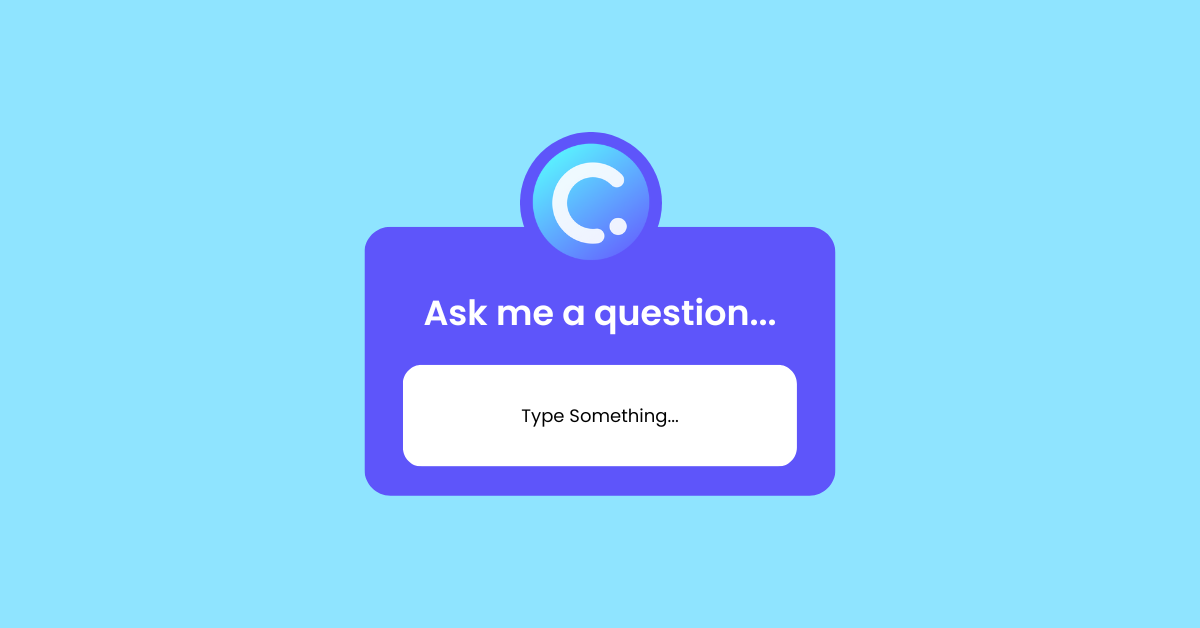
Preparing the slide content is nothing compared to dealing with daunting questions during the Q&A session of a presentation. Sometimes, if we are not lucky, we will face a tough crowd with even tougher questions that may leave us feeling challenged on the spot. And none of us likes the awkward moment of not being able to provide a satisfactory response to the audience.
Answering Q&A questions is a skill that everyone can master with the right resources and the right amount of preparation. You’ve searched, and we have them for you.
In this article, you will find more than 300 Q&A questions that are most commonly asked in a wide range of presentation occasions. Save them so you can be ready for even the most unexpected questions in your upcoming presentations!
What Are Q&A Questions?
Q&A questions, short for “Questions and Answers”, are inquiries posed by an audience or participants to the speaker or presenter during the Q&A session of a presentation . This Q&A segment typically follows a presentation, a talk or a lecture, providing the opportunities for the audience to seek clarification, ask additional information, or understand the speaker’s perspectives.
The whole point of Q&A sessions is to make the presentation more interactive and foster engagement . It’s a chance for the audience to pick the speaker’s brain and get a better understanding of the subject.
What Are the Different Types of Presentations?
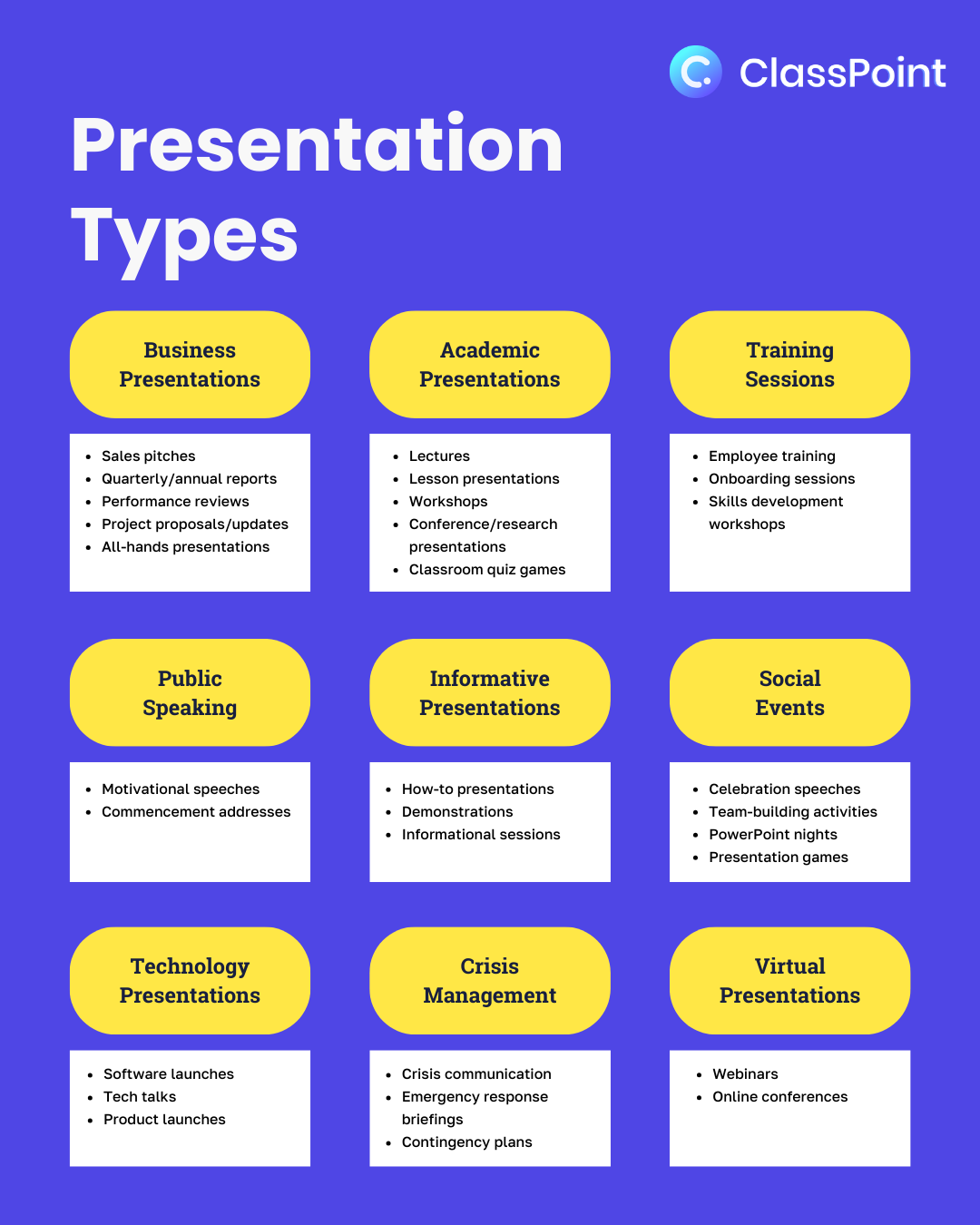
Business Presentations:
- Sales pitches
- Quarterly or annual reports
- Performance reviews
- Project proposals/updates
- All-hands presentations
Academic Presentations:
- Lesson presentations
- Conference/research presentations
- Classroom quiz games
Training Sessions:
- Employee training
- Onboarding sessions
- Skills development workshops
Public Speaking:
- Motivational speeches
- Commencement addresses
Informative Presentations:
- How-to presentations
- Demonstrations
- Informational sessions
Social Events:
- Celebration speeches
- Team-building activities
- PowerPoint nights
- Presentation games
Technology Presentations:
- Software launches
- Product launches
Crisis Management:
- Crisis communication
- Emergency response briefings
- Contingency plans
Virtual Presentations:
- Online conferences
Different presentations involve different audience types, and the nature of questions posed can vary significantly based on presentation formats and occasions. However, the core of a successful and engaging presentation remains constant – ensuring interactivity in a presentation and transforming it into a two-way street through Q&A questions and adding interactive elements or using interactive tools in your presentations.
Academic Presentation Q&A Questions
Q&a questions for lecture presentations.

- Can you provide more examples for the concept/theory you just explained?
- Are there any common misconceptions about this topic that we should be aware of?
- What are the main differences between this and [related topic]?
- Can you explain the steps involved in [specific process] in more detail?
- What are the current research trends or developments in this field?
- How does this concept connect to what we learned in the previous lesson?
- Are there any alternative approaches to solve the problems here?
- Can you recommend additional resources or readings?
- Can you provide some tips for studying this material effectively?
- Are there any real-world examples where this concept has been successfully applied?
- What are the most common mistakes students make when working on assignments for this topic?
- Can you explain the significance of this concept in the context of future careers?
- What are the ethical considerations associated with the topics we are discussing?
- Are there any current debates or controversies related to this topic?
- How does this topic connect with interdisciplinary subjects or other courses?
- Can you share examples of how this concept might be used in different industries or professions?
- Can you summarize the key takeaways of today’s presentation?
- Can you discuss any historical or cultural context that influences this topic?
- How might this information be relevant to current events or societal issues?
Q&A Questions for Academic Conference Presentations
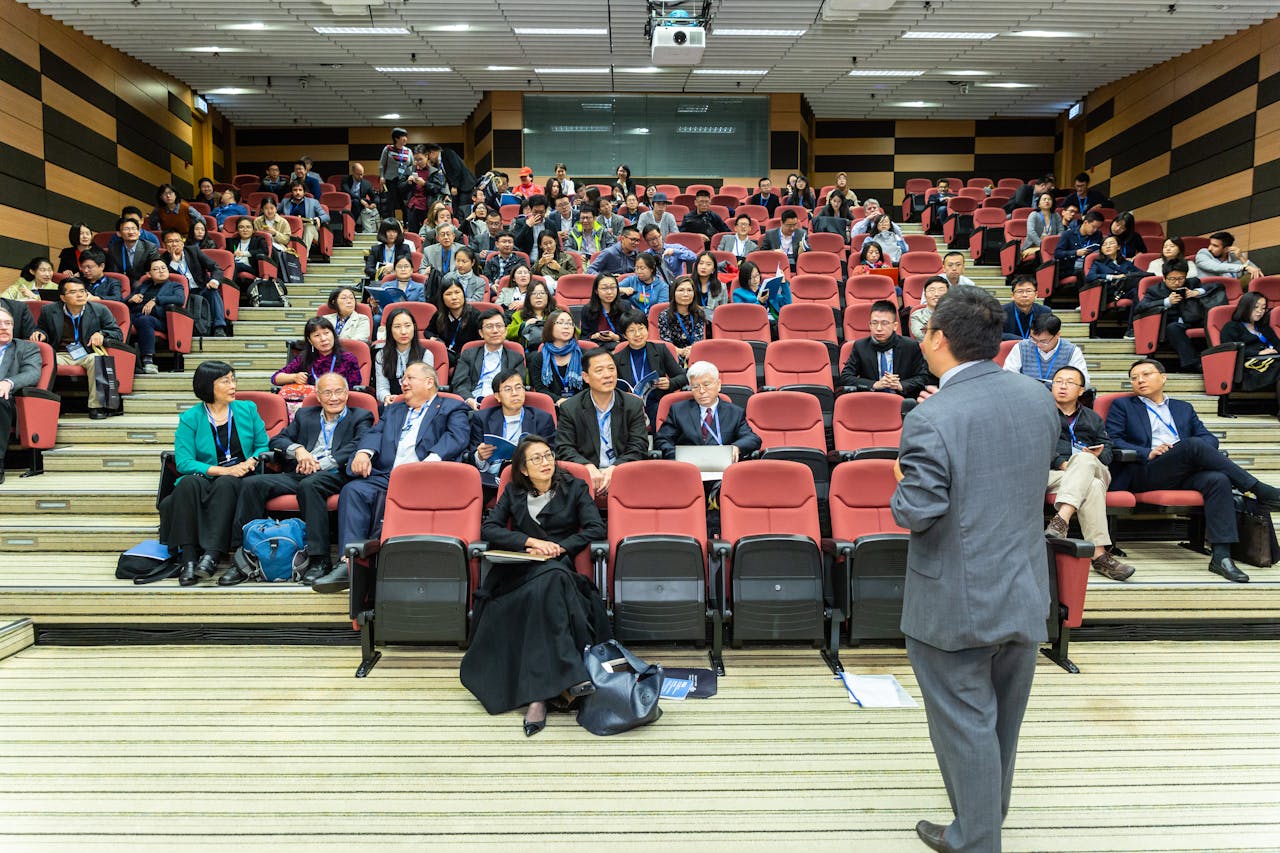
- How did you decide on the research question or topic for your study?
- How did you select your sample or participants, and how representative is it of the broader population?
- Can you explain the methodology you used in your research and why you chose that approach?
- What are the main findings or key results of your study?
- How do your findings contribute to the existing body of knowledge in your field?
- Can you discuss any limitations or challenges you encountered during your research?
- What implications do your findings have for practitioners in the field?
- Can you elaborate on the theoretical framework that guided your study?
- What ethical considerations did you address in your research, and how were they managed?
- How did you validate the reliability and validity of your research instruments or methods?
- How did you address potential biases or confounding variables in your research?
- How do your findings compare to previous research on the same or similar topics?
- Can you discuss any unexpected or surprising results that you discovered during your study?
- How did you handle data analysis, and what statistical methods were employed in your study?
- What alternative explanations or interpretations of your data did you consider?
- How does your research contribute to addressing specific gaps in current knowledge?
- How did you control for potential confounding variables in your research design?
- What recommendations do you have for policymakers based on your research findings?
- How does your study relate to other recent or ongoing research in the same area?
- Are your findings generalizable to different populations or settings?
- How did you ensure the rigor of your data analysis and interpretation?
- What role did collaboration play in your research, and how did you handle disagreements within the research team?
- Can you share any unexpected challenges you faced during the research process?
- How might your findings be applied in a practical context, such as in industry or education?
- How did you establish the validity of your conclusions in light of potential bias or subjectivity?
- What potential areas for future research did your study uncover?
- Can you discuss the relevance of your research to current global or societal issues?
- How did you handle any limitations in available resources or funding for your research?
- What key takeaway message or lesson would you like the audience to remember from your presentation?
Q&A Questions for Student Presentations
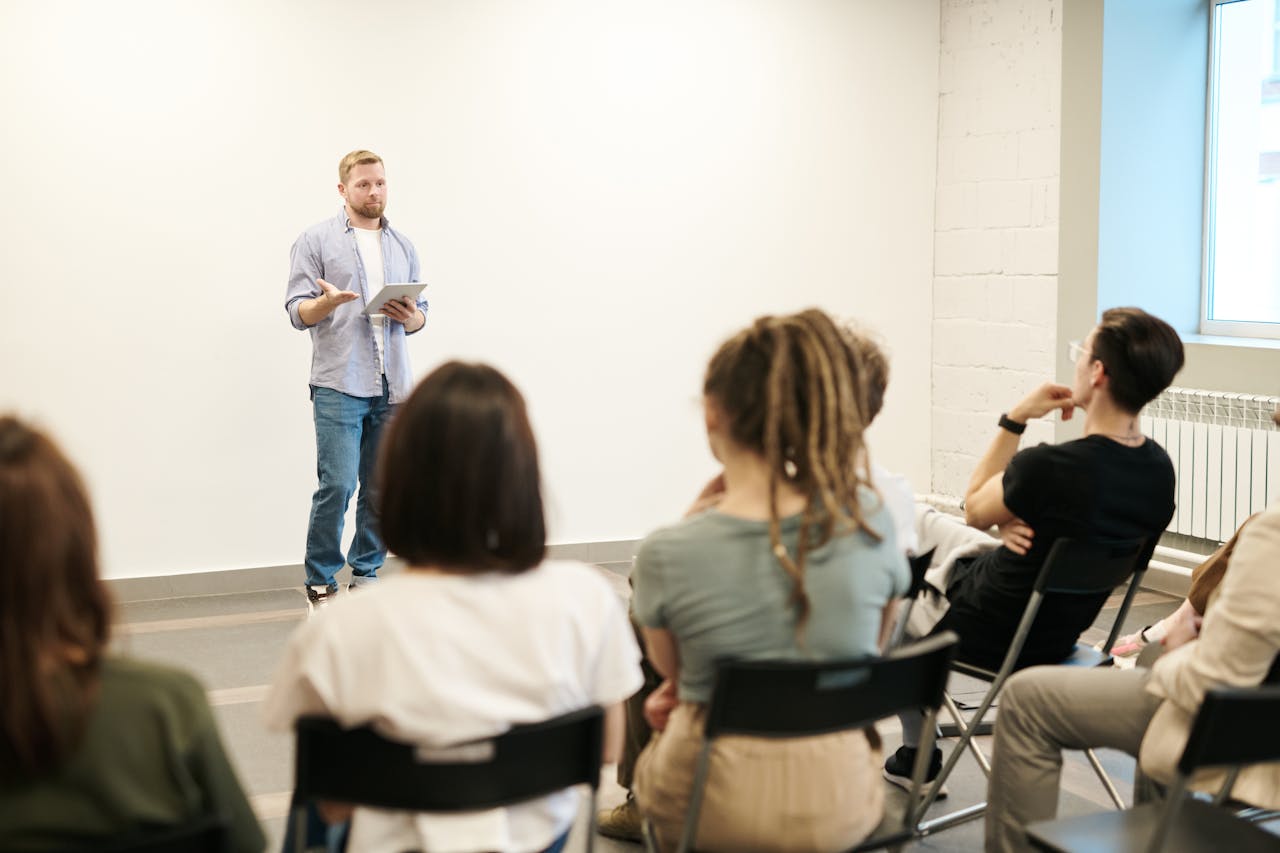
- Can you elaborate on the research process you used to gather information for your presentation?
- Can you discuss the process of selecting and organizing the visual elements in your presentation, such as charts or graphs?
- How did you decide on the topic or key elements to include in your presentation?
- What challenges did you encounter while preparing for your presentation, and how did you overcome them?
- What did you learn about the topic that surprised you during your research?
- Can you explain the significance of your topic or its relevance to the course content?
- Can you discuss any alternative perspectives or counter-arguments related to your topic that you considered?
- What sources did you consult to ensure the accuracy and reliability of the information presented?
- Can you explain the connection between your topic and current events or real-world applications?
- Can you share any specific examples or case studies that support the points you made in your presentation?
- Can you elaborate on any implications or applications of your findings beyond the scope of your presentation?
- Can you discuss any ethical considerations related to your topic that you addressed in your presentation?
- How might your presentation contribute to the understanding of the broader course themes or objectives?
- What aspects of the presentation are you most proud of, and what would you do differently next time?
Q&A Questions for Project-Based Lessons

- What is the main goal or objective of this project, and how will our work contribute to it?
- Can you provide more details about the criteria for success in this project?
- How will our progress be assessed, and what are the key milestones or deadlines?
- Can you clarify the roles and responsibilities of each team member in the project?
- Are there specific resources or materials that we should use or reference for this project?
- Can you provide examples of successful projects from previous classes or students?
- Are there specific presentation or communication requirements for showcasing our project?
- What opportunities for feedback and revision will be available throughout the project timeline?
Business Presentation Q&A Questions
Q&a questions for sales pitches.

- What makes your product or service different from competitors in the market?
- Can you provide some specific examples of companies or clients who have successfully used your product/service?
- How does your product/service address specific pain points or challenges that customers commonly face?
- Can you share some success stories or case studies related to your product/service?
- How does your product/service integrate with existing tools or systems our company uses?
- What kind of support or training is provided to customers after they purchase your product/service?
- Can you explain the implementation process and how quickly we can expect to see results?
- Are there any customization options available to tailor the product/service to our specific needs?
- What kind of ongoing maintenance or updates does your product/service require?
- How do you ensure the security and privacy of our data when using your product/service?
- Are there any limitations or restrictions we should be aware of when using your product/service?
- How often do you release updates or new features to your product/service?
- Can you explain the scalability of your solution and how it can grow with our business?
- What is your company’s roadmap for future developments or enhancements to the product/service?
- What is the typical return on investment (ROI) that your customers experience after implementing your product/service?
- How do you handle issues or challenges that may arise post-purchase?
Q&A Questions for Work Presentations

- How does your proposal align with our company’s overall goals or strategic objectives?
- What potential challenges do you foresee in implementing this plan, and how do you plan to address them?
- Can you explain the specific roles and responsibilities of each team member involved in this project?
- What kind of timeline are you envisioning for the different phases of this project?
- Have you considered alternative approaches to achieve the same goals, and if so, what are they?
- What resources, budget, and manpower will be required to execute this plan successfully?
- How do you plan to measure the success or effectiveness of this project?
- Are there any potential risks associated with your proposal, and what mitigation strategies do you have in place?
- Can you provide examples of similar projects that have been successful in the past, either within our company or in other organizations?
- How will you keep stakeholders informed and engaged throughout the project lifecycle?
- What kind of collaboration and communication tools do you plan to use to keep the team connected?
- Are there any dependencies or external factors that could impact the timeline or success of this project?
- Can you explain how this project aligns with current industry trends or best practices?
- What are the potential roadblocks or obstacles you anticipate, and how do you plan to overcome them?
Q&A Questions for Performance Review Presentations

- Can you highlight specific projects or tasks where you feel you excelled?
- How have you demonstrated leadership skills and the ability to take initiative?
- Have there been any instances of conflict or difficult situations, and how did you handle them?
- What accomplishments are you most proud of since our last performance review?
- Where do you think you could have performed better, and what challenges did you face?
- How well do you think your current responsibilities align with your career goals?
- What new skills or responsibilities would you like to take on in the next year?
- How have you found the feedback and communication within the team or organization?
- How well do you feel you have contributed to team projects and collaborations?
- Are there ways we can enhance teamwork and collaboration within the team?
- Is there anything we can do to support you better in your role?
- What additional resources or training do you think would benefit you in your role?
- What motivates you in your work, and how can we ensure your continued motivation?
- What steps can we take to help you achieve your long-term career goals?
Q&A Questions for Annual/Quarterly Report Presentations
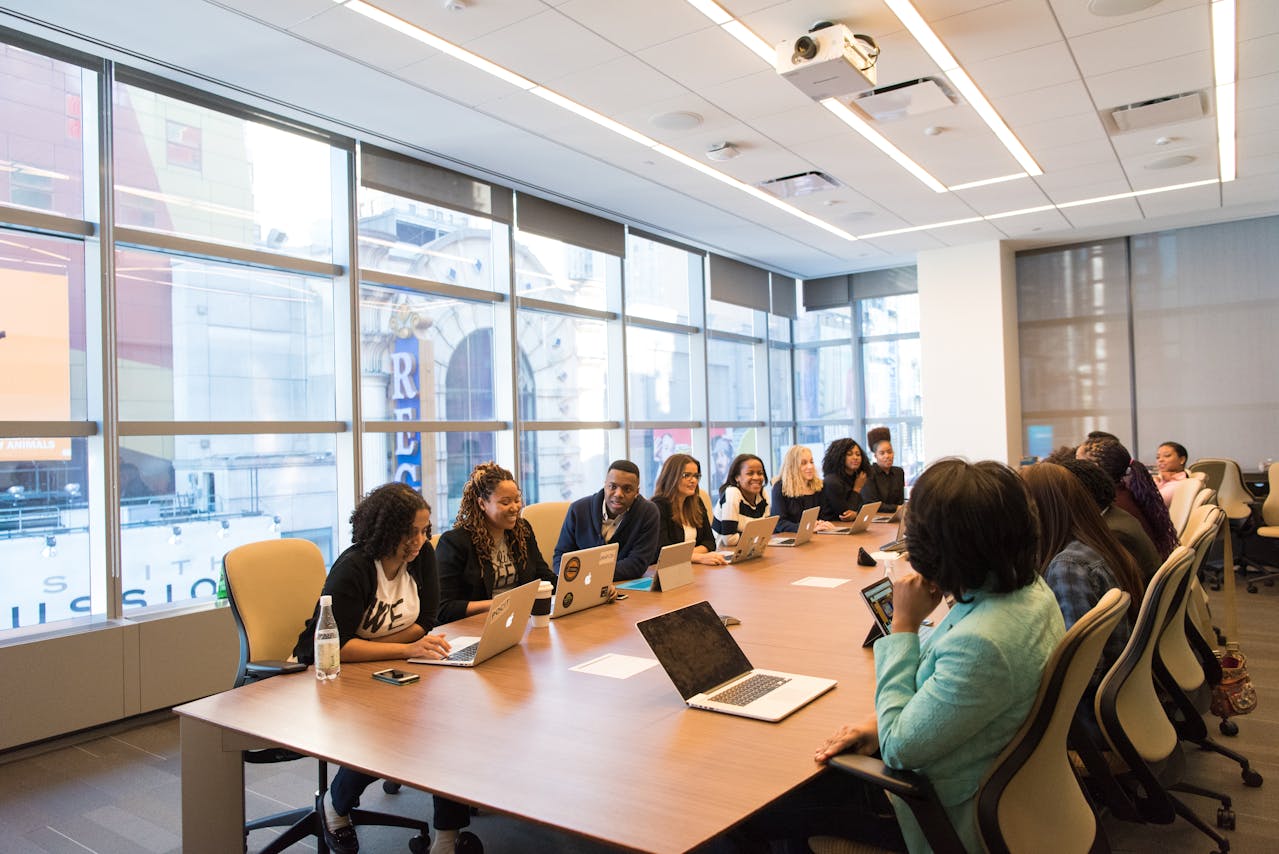
- How did specific projects or initiatives contribute to the overall success or challenges outlined in the report?
- What challenges or obstacles did the team face during the reporting period, and how were they addressed?
- Are there any unexpected or significant changes in the industry landscape that may affect future performance?
- What steps were taken to mitigate risks and uncertainties identified in the previous reports?
- Can you discuss the budgetary implications of the results presented in the report?
- How did the team adapt to changes in customer preferences or demands during this reporting period?
- How do the results align with the long-term strategic objectives of the organization?
- Can you discuss any feedback or concerns received from clients, customers, or stakeholders mentioned in the report?
- How did internal collaborations or cross-functional teamwork contribute to the outcomes presented?
- What initiatives or projects are planned for the upcoming quarter or year in response to the findings in the report?
- Can you elaborate on the return on investment (ROI) for specific marketing or promotional activities mentioned in the report?
- How do the current results compare to benchmarks or industry standards for similar organizations?
- Can you discuss any changes or improvements in operational processes that were implemented during the reporting period?
- Can you provide insights into any potential areas for improvement or focus in the coming reporting period based on the data presented?
Q&A Questions for All-Hands Presentations
- What are the key priorities and goals for the team in the upcoming quarter/year?
- Can you provide more details about the recent changes in team structure or leadership?
- How will recent industry trends or developments impact our team’s strategies moving forward?
- Can you discuss the reasoning behind recent policy changes or updates within the team?
- How will the team address challenges identified in recent performance reports or feedback?
- Can you provide insights into the budget allocation and resource planning for the team?
- How will the team adapt to changes in technology or tools that may affect our workflow?
- What professional development opportunities will be available to team members in the coming months?
- Can you share updates on recent achievements or milestones reached by the team?
- Can you discuss the team’s approach to fostering diversity and inclusion within the workplace?
- What strategies will be implemented to maintain team morale and motivation?
- Can you elaborate on the team’s strategy for managing workloads and preventing burnout?
- How will the team address any challenges related to communication?
- What steps will be taken to recognize and celebrate individual and team achievements in the future?
Public Speaking Q&A Questions
Q&a questions for motivational presentations.

- How did your background or experiences shape your perspective on the topic you discussed?
- How can individuals or communities apply the ideas you shared in their own lives or work?
- What impact do you hope your work will have on the future of [your topic]?
- How has your perspective on [your topic] evolved throughout your journey, and what lessons have you learned?
- How do you suggest we, as individuals, can contribute to or support the goals you outlined in your presentation?
- What advice do you have for someone who wants to get involved in or pursue a similar field or project?
- What are the common misconceptions or misunderstandings about [your topic] that you’d like to address?
- How can the audience stay informed or engaged with ongoing developments in your field or topic?
- Can you share personal experiences where you overcame significant obstacles and found motivation in [an area]?
- What advice do you have for dealing with [a personal issue]?
- How do you handle setbacks and failures in [an area]?
- What daily habits or routines do you recommend for sustaining long-term motivation?
- How can individuals at various career stages benefit from the insights you shared?
- Can you share examples of successful individuals who have been a source of inspiration for you?
Informative Presentation Q&A Questions
Q&a questions for youtube or online webinar presentations.
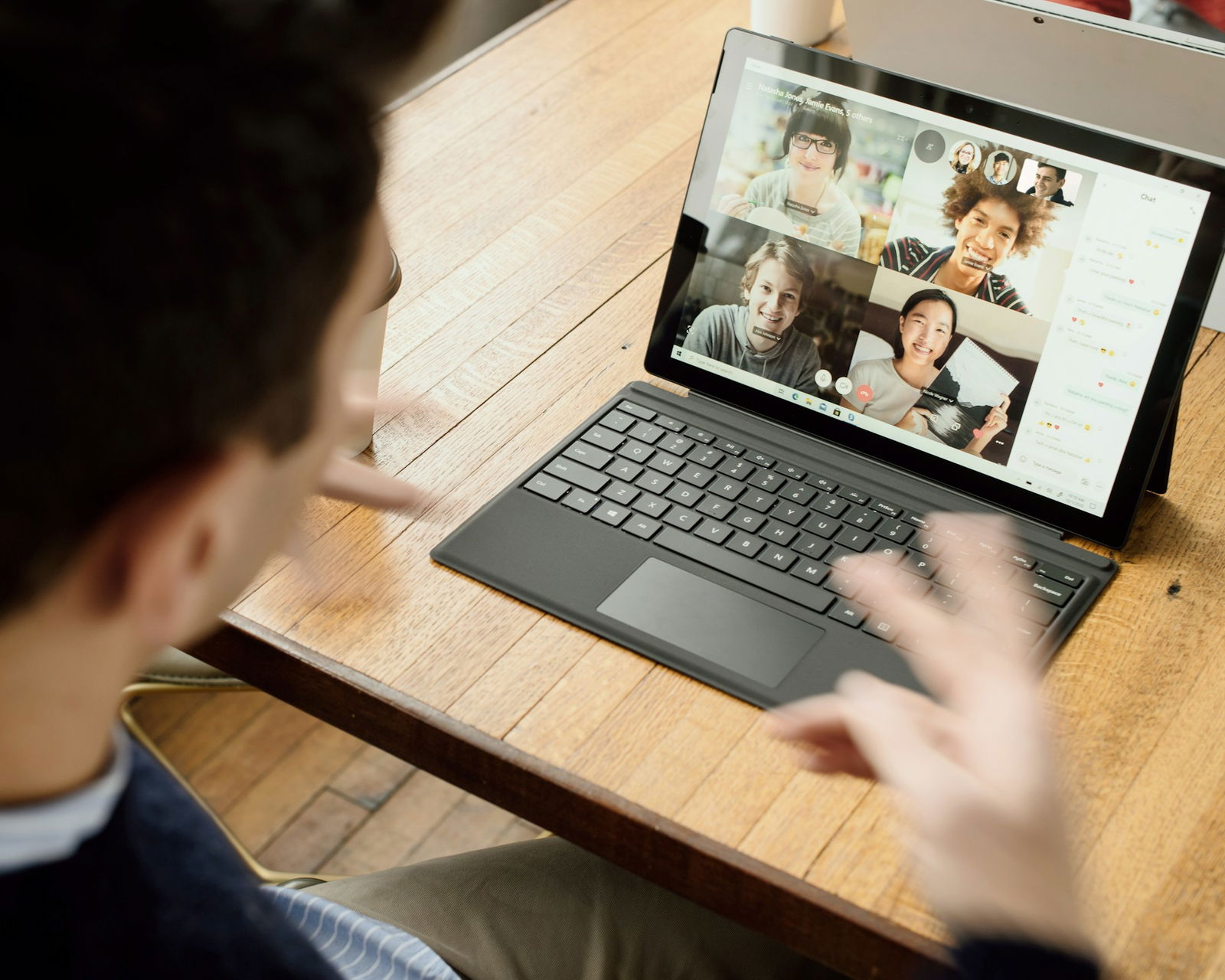
- How can I access the recording of this webinar for future reference?
- Can you recommend any additional resources for further learning on this topic?
- How does this information apply to different industries or professions?
- How do you suggest we adapt these concepts to our specific organizational context?
- How can we stay updated on new developments or research in this field?
- Can you suggest strategies for overcoming resistance to change when implementing these ideas?
- What role does ongoing professional development play in mastering the skills you discussed?
- How can individuals without a background in this field apply the principles you discussed?
- Can you explain the potential challenges or common mistakes people might encounter when trying this on their own?
- How do you foresee the future trends or developments affecting the subject of this webinar?
- Can you recommend specific tools or software that would enhance our implementation of these strategies?
- What are some key indicators of success when implementing the strategies you discussed?
- Can you discuss any industry standards or benchmarks related to the topics covered in this webinar?
- What would be the first step you recommend for someone looking to implement these ideas in their organization?
Q&A Questions for Demonstration Presentations

- Can you clarify the purpose or goal of the demonstration?
- What specific steps are involved in the process you just demonstrated?
- Are there alternative methods or tools that can be used for this demonstration?
- How long does it typically take to master this skill or process demonstrated?
- Are there any safety precautions that should be considered?
- Can you provide tips for troubleshooting or overcoming obstacles in the demonstrated activity?
- How does this demonstration apply to real-world scenarios or practical situations?
- Are there variations or advanced techniques related to this demonstration that you didn’t cover?
- Can you share examples of successful applications or projects that used the demonstrated technique?
- How does this demonstration align with current trends or innovations in the field?
- What feedback or suggestions do you have for individuals attempting the demonstrated task for the first time?
- Can you discuss any modifications or adaptations that may be necessary for different skill levels or abilities?
Training Presentation Q&A Questions
Q&a questions for training workshops.
- Can you provide more examples or practice exercises to reinforce the concepts you just covered?
- Are there any additional resources or recommended readings for further learning on this topic?
- Can you explain the specific steps or strategies for applying what we’ve learned in a real-world context?
- How often is this training updated to reflect changes in industry standards or best practices?
- How can we track our progress and measure the effectiveness of this training?
- Are there opportunities for practical application or hands-on exercises to reinforce the learning?
- Can you discuss any potential challenges or common difficulties participants might encounter during the training?
- Can you provide insights into how this training aligns with current trends or innovations in the industry?
- How will successful completion of this training impact our professional development or career advancement?
- What kind of ongoing support or resources will be available to participants after completing the training?
- Can you explain the relevance of each module or section of the training to our specific roles or responsibilities?
- Can you discuss any case studies or success stories related to individuals who have completed this training?
- Can you outline the specific skills or competencies participants are expected to gain by the end of the training?
Creative Presentation Q&A Questions
Q&a questions for brainstorming presentations.

- How did you arrive at the ideas presented during the brainstorming session?
- Can you provide more context on the criteria used to evaluate and prioritize the proposed ideas?
- Are there specific goals or objectives that the brainstormed ideas aim to achieve?
- How do the ideas generated align with the overall vision or mission of the team or organization?
- Can you discuss any potential challenges or constraints that may impact the implementation of these ideas?
- What steps will be taken to further develop and refine the selected ideas from the brainstorming session?
- How will the team decide which ideas to prioritize or move forward with?
- What role do you see each team member playing in the implementation or development of these ideas?
- What steps will be taken to test or prototype the most promising ideas before full implementation?
- Are there any potential synergies or connections between the different ideas presented?
- Can you discuss the anticipated impact or outcomes of implementing these ideas on the team’s objectives?
Q&A Questions for Creative Work Showcase Presentations

- What inspired your creative concept or idea?
- Can you discuss your creative process and how you generated or developed your ideas?
- How did you overcome creative blocks or challenges during the project?
- Can you share any unexpected twists or turns that occurred during the creative process?
- What influenced your choice of colors, themes, or visual elements in your presentation?
- Can you discuss any alternative concepts or ideas that you considered before finalizing your creative work?
- How did you decide on the overall tone or mood of your creative piece?
- Can you discuss any specific techniques or tools you used to bring your creative vision to life?
- How do you balance originality with meeting the expectations or objectives of the project?
- Can you elaborate on the symbolism or deeper meaning behind certain elements in your creative work?
- How did you ensure your creative work aligns with the intended message or purpose of the project?
- Can you share any unexpected challenges you encountered while executing your creative ideas?
- What advice do you have for others looking to enhance their creativity or embark on similar projects?
- Can you discuss any future plans or developments related to your creative work?
Q&A Questions for Portfolio Presentations
- How did you curate or select the pieces included in your portfolio?
- Can you discuss the overarching themes or concepts that tie your portfolio together?
- What criteria did you use to determine which projects or works to include in your portfolio?
- Can you provide insights into your creative process for one of the featured projects?
- How do you believe your portfolio reflects your growth or evolution as a professional or artist?
- Can you discuss any challenges you encountered while working on specific projects in your portfolio?
- What inspired the overall design and layout of your portfolio presentation?
- Can you share any feedback or critiques you received during the creation of your portfolio?
- How do you handle showcasing both personal and professional work in your portfolio?
- How do you stay updated on current trends or techniques in your industry, and how does this influence your portfolio?
- Can you elaborate on any technologies or tools you used to create or present your portfolio?
- How do you handle showcasing a diverse range of skills or talents in your portfolio?
- How do you balance consistency with variety in the presentation of your portfolio pieces?
- Can you provide insights into the decision-making process behind the visual and aesthetic choices in your portfolio?
Subject-Based Presentation Q&A Questions
Q&a questions for history presentations.
- Why is it important for us to study this particular historical period or event?
- Can you provide more context on the social and cultural aspects of the time you discussed?
- Are there any alternative perspectives or interpretations of the historical event you presented?
- How did political or economic factors contribute to the events you covered in your presentation?
- Can you discuss the impact of this historical period on contemporary society or global affairs?
- How do historians generally view or interpret the significance of the events you discussed?
- Can you elaborate on any controversies related to the historical topic you presented?
- Can you discuss any parallels or connections between the historical events you covered and current events?
- Can you elaborate on any lesser-known or overlooked aspects of the historical topic?
- What were the main causes and consequences of the events discussed in this lesson?
- How did global events or other regions influence the events in this specific historical context?
- Can you share more details about the key figures or individuals involved in the historical events?
- Can you discuss any social movements or cultural shifts that occurred during this time?
- Were there any controversies or debates among historians regarding the interpretation of these events?
- What primary sources or historical documents can we explore to gain a deeper understanding of this time?
- What lessons or insights can we draw from the mistakes or successes of the past?
Q&A Questions for Geography Presentations
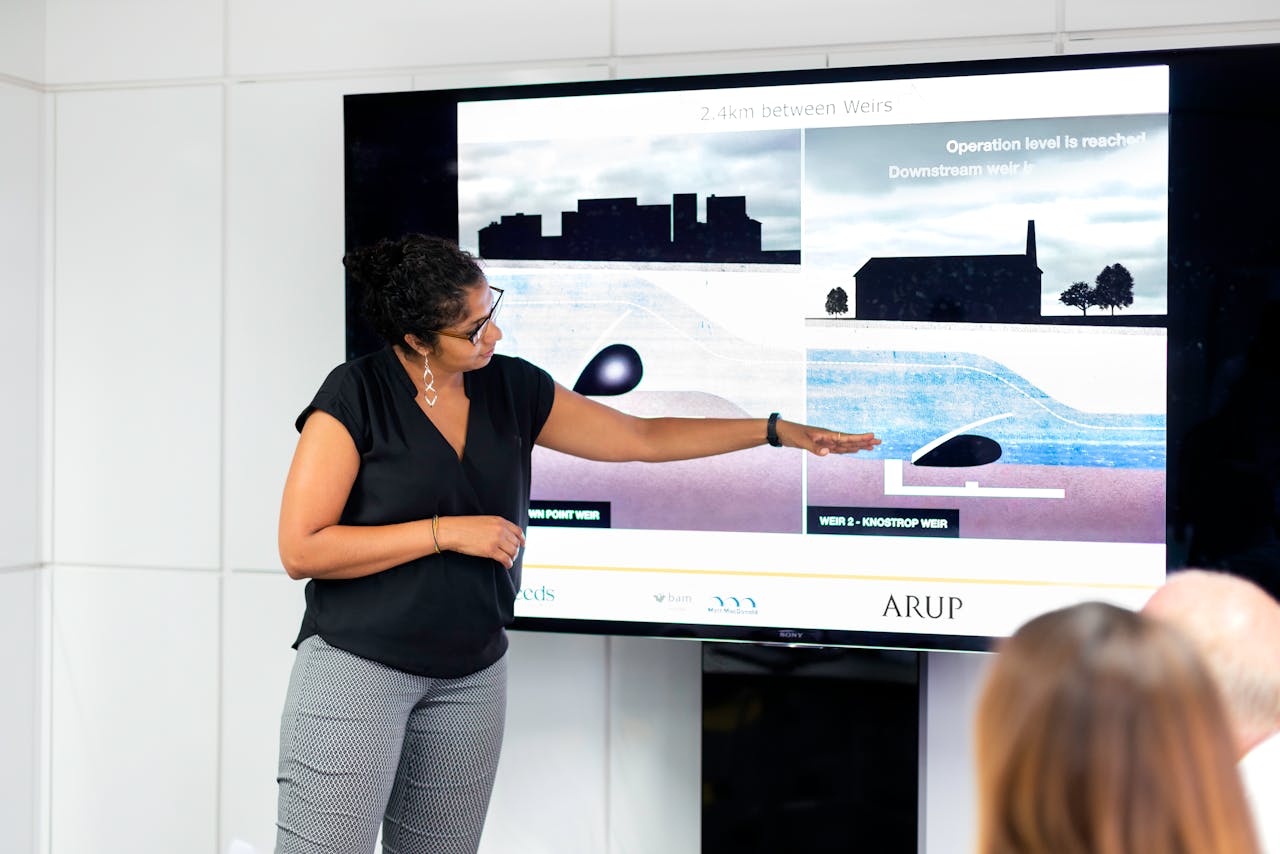
- Can you explain the significance of the geographical features discussed in this lesson?
- What are the cultural or societal aspects that make this geographic area unique?
- Can you discuss the environmental challenges or changes occurring in the region you shared?
- Are there any connections between the geography of a region and its cultural practices or traditions?
- How has human activity impacted the natural landscapes and ecosystems in the region?
- Can you provide insights into the economic factors shaping the geography of the area?
- How do political boundaries or geopolitical factors influence the geography of the region?
- Can you discuss any current or historical conflicts related to the geography you presented?
- Can you share examples of how globalization has impacted the geography you discussed?
- How does the geography of the area influence migration patterns and population distribution?
- Can you discuss any challenges or opportunities related to urbanization in the region?
- Can you provide examples of how transportation infrastructure shapes the geography of the region?
- How do the geographical features discussed impact the local economy and lifestyle?
- Can you discuss the role of sustainable development in shaping the geography of the region?
- How does the geography of a region impact the availability and distribution of resources?
Q&A Questions for Science Presentations
- How does this scientific theory or principle apply to real-world situations?
- Can you provide examples of experiments or demonstrations that illustrate the principles being taught?
- How do current advancements or research in technology influence our understanding of this science?
- Can you provide examples of how this scientific concept has been applied in various industries?
- Can you share insights into any ongoing or future research related to the subject of the lecture?
- Can you elaborate on any potential interdisciplinary connections between this science and other fields?
- How do you see the future developments or advancements shaping the field of science you discussed?
- Can you discuss any recent advancements or breakthroughs in the field related to your presentation?
- What experiments or studies have been conducted to support the information presented in your topic?
- Are there any unanswered questions or areas of uncertainty in the scientific understanding of this topic?
- Can you discuss the importance of peer review in the scientific process?
Q&A Questions for Social Science Presentations
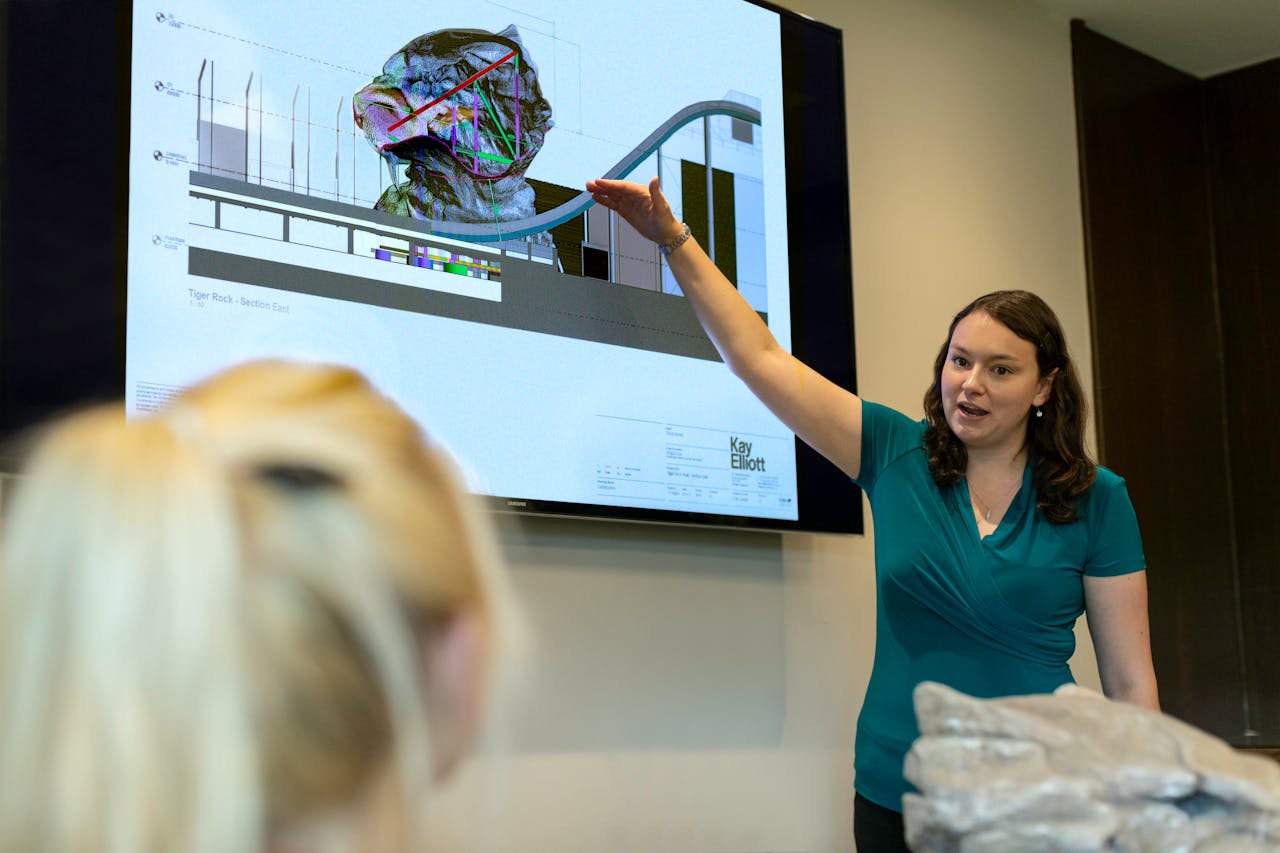
- Can you provide some background information on the topic?
- Can you explain the significance of any statistical analyses or data presented in this studies?
- How might cultural or societal factors influence the interpretation of the findings?
- Are there any primary sources or case studies used in the lesson to illustrate these social science concepts?
- What are the alternative opinions or perspectives that one should consider for this topic?
- How can we critically evaluate bias in the research?
- What are the roles of globalization or international perspectives in this topic?
- Why is [a perspective/opinion] the case?
- What are the potential objections for [a perspective/opinion]?
- How does the topic of this lesson relate to broader social issues or current events?
- Are there any conflicting theories or perspectives within the field related to this lesson’s content?
- Can you explain the practical implications of the theories or concepts covered in this lesson?
- How do the concepts covered in this lesson contribute to a deeper understanding of human behavior or society?
- What are some potential criticisms or limitations of the theories presented in this lesson?
Q&A Questions for Art and Design Presentations
- How do different artistic techniques contribute to the overall aesthetic of the piece?
- Can you explain the cultural or historical influences behind the art or design style being taught?
- How can personal experiences or emotions be expressed through art and design?
- Can you provide examples of famous artists or designers who are known for this particular style or technique?
- How does the use of color, shape, and composition impact the visual impact of the artwork or design?
- Are there any contemporary or modern trends in art and design that relate to the topic of this lesson?
- How does the art or design being taught relate to broader movements or styles in the art world?
- How can art and design contribute to social or cultural change?
Fun Presentation Q&A Questions
Q&a questions for powerpoint night presentations.
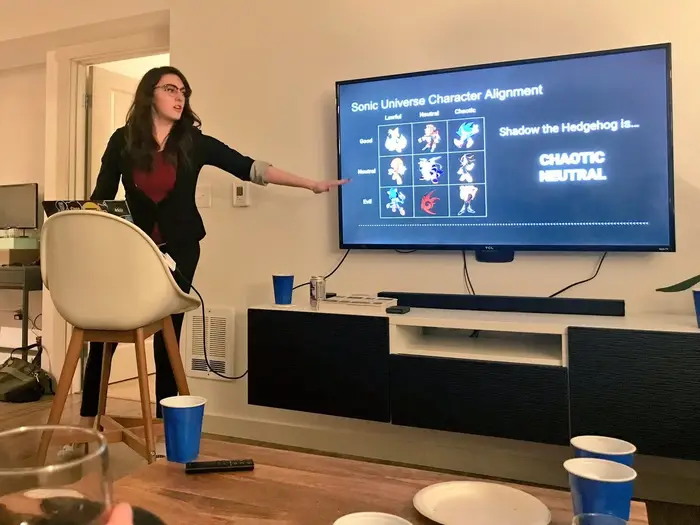
- Do you remember the time when we [shared a memorable adventure or experience]?
- What’s your favorite memory from our past travels together?
- If we were to plan a group vacation, what destination would you suggest for our bucket list?
- What’s one place you’ve always wanted to visit that we haven’t explored together yet?
- What’s the most spontaneous or unplanned adventure we’ve had?
- What’s our favorite inside joke?
- If we were to create a time capsule representing our friendship, what would you include in it?
- What’s the craziest or most unexpected thing we’ve ever done together?
- What’s your go-to travel snack or comfort food?
- What’s a shared goal or dream destination you’d like to achieve with the group?
- Can you recall the first time we met, and what was your initial impression of me?
- What’s a skill or talent of mine that surprised you when you first discovered it?
- If our group had a theme song, what do you think it should be and why?
- If we were characters in a movie, how would you describe our dynamic or roles?
- What’s a shared goal or aspiration that you think our group could work towards together?
- What’s your favorite thing about our friendship that you cherish the most?
- If we had a group motto or slogan, what do you think it should be?
Q&A Questions for PowerPoint Games
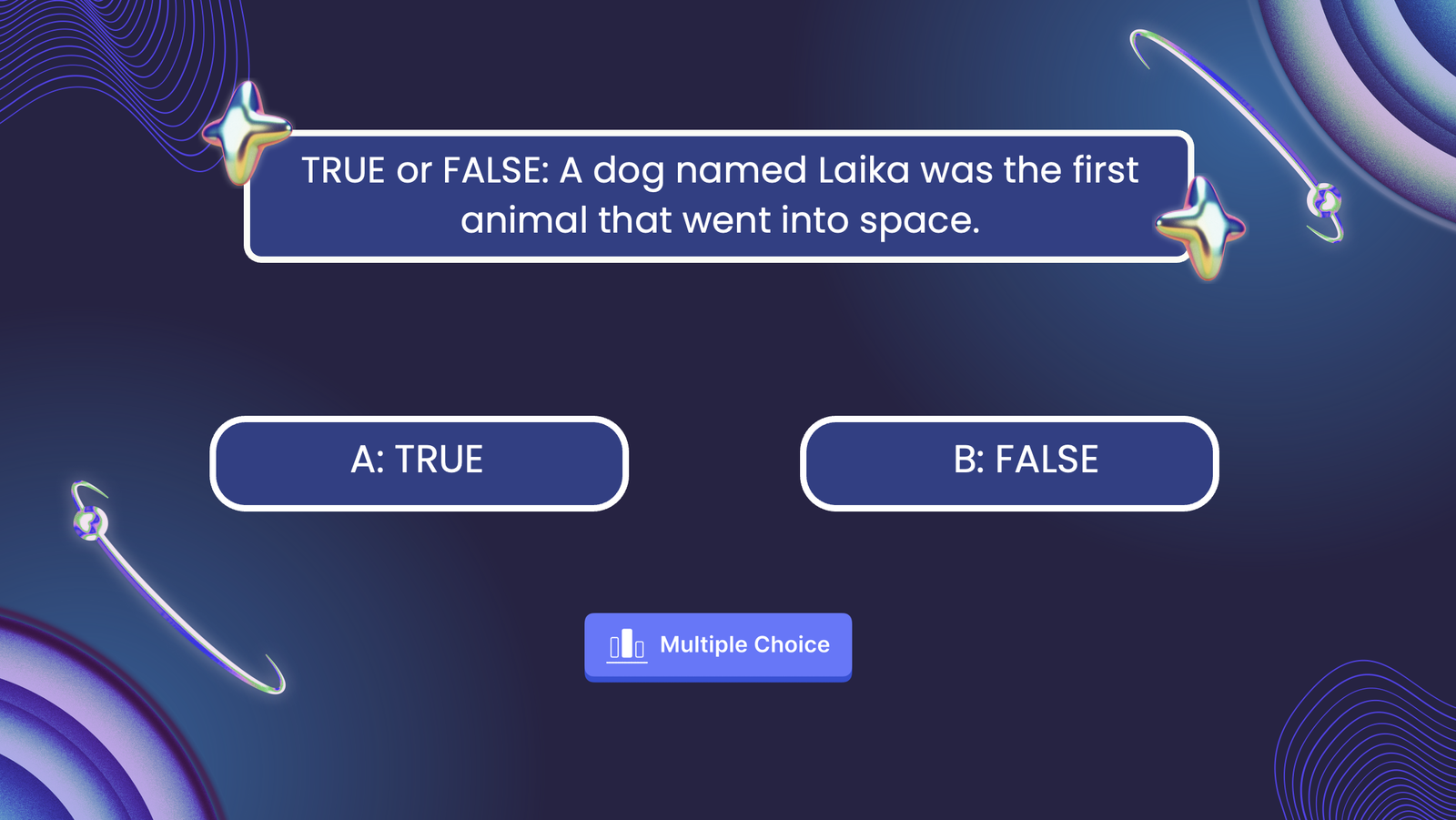
- What are the rules of the game?
- How long is the expected duration of the game?
- Are there any specific materials or equipment needed to play the game?
- Can you explain the objective or goal of the game?
- Are there any hidden surprises in the game that players might not immediately notice?
- Any secret tips for success in the game?
- Are there any special prizes or incentives for winners of tonight’s games?
- How is the game scored, and what determines the winner?
- What happens if there’s a tie in the game?
- Are there any variations or optional rules we should be aware of?
- Can you explain the order of play and how turns are determined?
- Are there penalties or consequences for certain actions during the game?
- Can participants form teams, or is the game strictly individual play?
- Are there any restrictions on player movement or interaction during the game?
- Can you provide examples of common strategies or tactics used in the game?
- How is cheating or rule violations handled in the game?
- Can you recommend any strategies for newcomers or first-time players?
Feedback Q&A Questions

- What specific aspects of the presentation do you think were most effective?
- Can you provide suggestions for improving the clarity of certain points in the presentation?
- How well do you think the presenter engaged with the audience during the presentation?
- Were there any areas where you felt the presentation could have been more engaging or interactive?
- Can you offer insights into the pacing of the presentation and whether it was appropriate?
- What are your thoughts on the visual elements, such as slides or graphics, used in the presentation?
- Were there any technical issues or challenges that affected your experience during the presentation?
- Can you provide feedback on the overall organization and structure of the presentation?
- Were there any moments in the presentation that you found particularly memorable or impactful?
- Did the presenter effectively convey the key messages or takeaways of the presentation?
- How well did the presenter connect with the audience’s level of understanding or familiarity with the topic?
- Can you discuss any specific examples or anecdotes that resonated with you during the presentation?
- Were there any instances where the presenter could have provided more context or background information?
- What are your thoughts on the presenter’s use of language, tone, and overall communication style?
- Can you suggest ways in which the presenter could improve audience engagement or participation?
- Were there any aspects of the presentation that you found confusing or difficult to follow?
- Can you share your overall impression of the presentation and whether it met your expectations?
- What recommendations do you have for the presenter to enhance the overall impact and effectiveness of future presentations?
Closing Thoughts
With more than 300 Q&A questions to help you with your preparation, you can save so much time thinking and anticipating the questions your audience may ask during the Q&A session of your presentation. Now, you can focus on what matters most – acing your presentation!
BONUS: Lazy to create PowerPoint presentations from scratch? Try these 11 top-rated AI PowerPoint generators (they’re free!), as well as these 4 ways to use ChatGPT to create PowerPoint presentations .
About Zhun Yee Chew
Supercharge your powerpoint. start today..
800,000+ people like you use ClassPoint to boost student engagement in PowerPoint presentations.
- Skip to primary navigation
- Skip to main content
- Skip to footer
Tress Academic
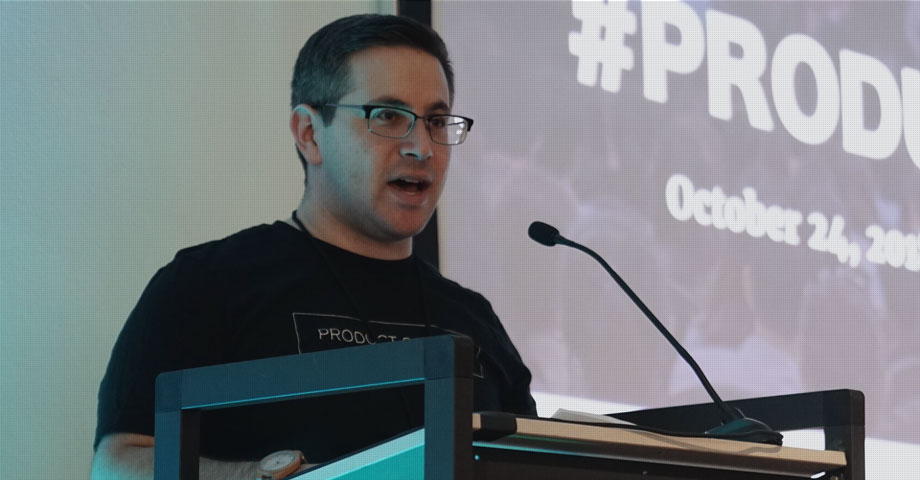
#30: Questions from the audience you should be prepared to answer
November 5, 2019 by Tress Academic
You can never know the exact questions that the audience will ask after you have finished a conference presentation. This uncertainty can cause additional stress for you, and put you on edge during your presentation. There are, however, a few questions you can assume that someone from your audience might ask. So why not prepare yourself for these questions just in case? We’ll tell you which type of questions these are, and how you can easily prepare yourself for them. Having answers ready for these standard questions will make the Q&A part so much easier for you and alleviate unnecessary stress on the big day.
When we recently held our course “How to present at international scientific conferences” at a Swiss university, we discussed the Q&A part that comes right after a conference presentation with the participants. They spoke about their experiences at conferences where they presented their research, and everything that made it especially difficult for them. The presentations were always a big cause of stress and anxiety for them – is it for you as well? If so, we have another post from the Smart Academics Blog that will help you to deal with being nervous, see #3: “How to cope with stage fright?” .
If you are not an experienced presenter, it is a pretty big thing to go out and stand in front of a large crowd of colleagues from your field and tell them about your work. What our course participants were most scared of – even more than giving the talk – was the moment after they had delivered their presentation and the session chair opened the floor for questions. This was the moment where the unexpected could happen because they didn’t know what the questions would be. The biggest fear in the moment was to receive questions that they cannot answer or that make them look inexperienced, ignorant or worse!
We totally understand this fear. Imagine you were well-prepared for a talk and had a good feeling throughout the presentation, but the questions from the audience could spoil the good impression. Just imagine if you would have no idea how to answer relatively simple questions – this would be a waste of!
Do you have the same fears? We’d love to help you overcome them! There are actually a handful of questions that are very likely to be asked. These are the type of questions that so often come up at conferences, especially when early-career researchers are presenting. You should be prepared for these questions, with an answer in hand, which is not difficult to do! It should be a part of your preparation for the conference talk to think about these questions. You will see, it takes a lot of stress off your shoulders!
Let us tell you about the most common audience questions at conferences below. If you want to prepare yourself for the next talk, download our free worksheet “Questions I should be ready to answer” .
Typical audience questions you should have an answer for
1. what’s next … .
Of all the questions that people from the audience could ask you, this is for sure one of the most friendly and helpful ones. This question offers no critique of your work, and it does not ask for clarification of anything you said in your talk. The questioner simply wants to know what your next research steps are. They are interested in your research and express curiosity of how it might go on.
So, make sure you have an idea about which follow-up steps you want to take with your research. Be prepared to tell the audience a little bit about how you might progress. Think about what you want to say before the question is asked and make a structure of the points you want to say, so you don’t leave out anything important. Use our free worksheet “Questions I should be ready to answer” to help you.
2. Why should we know more about this?
If you hear this question right after finishing your talk, you might feel a bit frustrated, or even threatened. Why is the audience asking this at the end? Wasn’t your talk clear enough? Have they not listened to you? It can sound as if the questioner doubts the value or necessity of your work. Or it could feel as if you were not clear enough when describing why you research what you do.
In fact, this is again a very friendly and helpful question. It has no negative connotation and the questioner has no intention of criticising you or your work. He or she may just want to know more explicitly from you why you did this research and why it is worth doing in such detail. It is a question about the relevance of your work.
So, what do you do? Tell the audience why you did your research, what you expect as its outcome and give some examples or applications to help them better understand why your work is needed. Use our free worksheet “Questions I should be ready to answer” .
3. How have you done this …?
This is a question about your methods or the overall approach you’ve applied. You will probably be surprised to get this question because you’ll think you had explained everything very clearly in your talk. Obviously, this was not the case for the person asking.
Don’t be scared! You have most likely not failed to talk about your methods, but in presentations, the reporting on the scientific methods that were applied to address a certain question is often the most difficult part for the audience to comprehend. Thus, it is not surprising that questions arise on the matter.
Properly describing the methods you applied in your research in a conference presentation is challenging. You hardly have the time to go into such detail in order to make the audience fully understand it. In a typical 15-minute presentation slot, which requires time for questions and discussion, so it is really more like a 10-12 minute talk, you have only a few minutes available to explain your approach.
For this reason, we advise participants in our courses to always keep the methods part of your presentation short, by reducing it to the main steps and avoiding too much detail. You should give only a rough outline of the steps because it is difficult, tiring, and sometimes also a bit boring for the audience to listen to a specific set-up of a workflow or a project when you have not been part of the project.
Instead, spend time in your talk presenting your problem, your findings, your examples, and your take-home message. This is what the audience needs to understand! But of course, it might then trigger a question about HOW have you done it, which again, you can prepare yourself for. It is really a friendly and helpful question from an interested person. The audience shows that they want to better understand how your work was done.
In your preparation phase, determine which methods or method steps could be unclear to your audience and what kind of information they would need to have for a quick understanding of a complex issue. Use our f ree worksheet “Questions I should be ready to answer” to help you prepare for this step.
4. What do you mean by …?
The fourth most common question that you can expect to receive is probably the easiest one to answer. It is a clarifying question where the questioner has not understood a specific term, a process, or an aspect of your presentation that you referred to.
Questions like this pose no threat but are necessary for your audience to fully get your talk. Don’t forget, you will also have some listeners in your audience that come from other fields and they might not be familiar with your specialist terminology. We can never know what the exact level of knowledge of our audience is, therefore, you will sometimes be surprised to get questions about aspects you think are common knowledge – they probably are not.
If you follow our rule to only include what you can explain yourself in your presentation, you will never have a problem with this question. If you fully comprehend what you talk about, you will always be able to address this question professionally. If you try to illustrate your vast knowledge by alluding to processes that you do not fully comprehend, you run the risk of not being able to further explain to them when asked by the audience. Keep your presentation air-tight to what you know you know!
You can prepare yourself with an overview of topics and aspects that probably somebody in the audience who isn’t from your field wouldn’t know and potentially need a clear explanation. Our free worksheet “Questions I should be ready to answer” will help you to prepare for this.
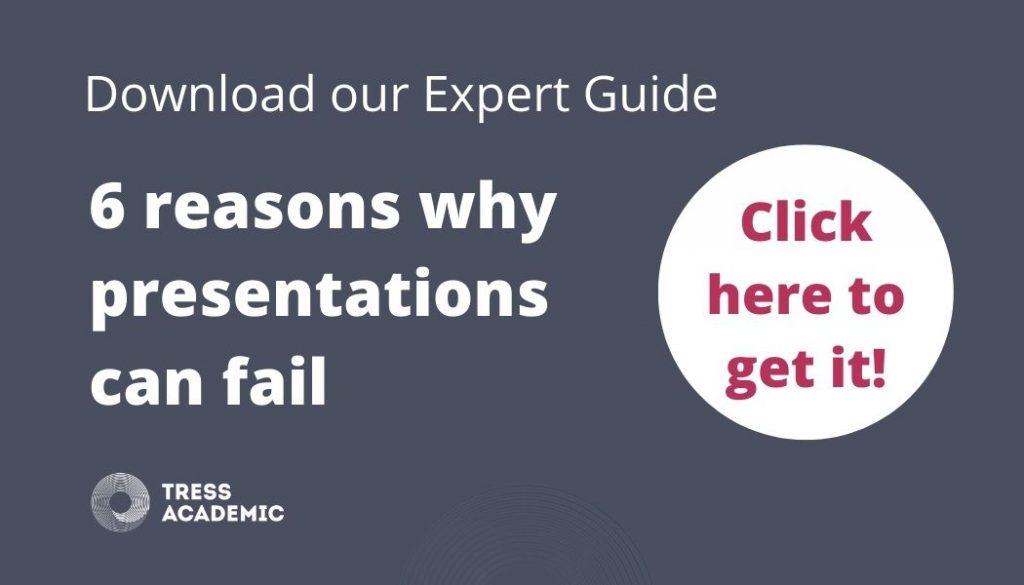
Naturally, the Q&A part of a conference presentation is the part that you can’t prepare for as precisely as the actual delivery of your presentation. There will always be an element of surprise for you and this is of course also the purpose of this interaction with the audience. They want to experience you off the cuff, where you have to show a bit of spontaneity. They are not coming to see a well-rehearsed play, but a glimpse of the scientists who are conducting this cutting edge work.
That does not mean everything taking place during the Q&A is random and you have to give yourself over to fate. An audience can feel when you are nervous and they feel for you when you are a less-experienced presenter. Therefore, they sometimes deliberately ask some of the questions above, because they know these are ‘soft-ball’ questions that you can answer. So, make sure you are prepared for them and show your audience that you have done the work and deserve their attention. We wish you best of luck with your next Q&A session!
Relevant resources:
- Worksheet “Questions, I should be ready to answer”
- Presentations course “How to present at international scientific conferences”
- Smart Academics Blog #03: How to cope with stage fright?
- Smart Academics Blog #24: New to the PhD? – 5 tips for a great start!
- Smart Academics Blog #26: First conference presentation? 17 life-saving tips
- Smart Academics Blog #95: Apply these 5 tips to improve any presentation
Relevant courses and services:
- 1-day course: Presenting successfully at virtual conferences
- 3-day course: How to present at international conferences
- 1-to-1 advice: Presentation Check
More information:
Do you want to present successfully at conferences? If so, please sign up to receive our free guides.
© 2019 Tress Academic
#ConferencePresentations #ConferenceTalk #QA #QuestionsAndAnswers, #AudienceQuestions
- Product Updates
- Polling l Q&A l Quiz Tips
Higher Education
- Employee Training
- Internal Comms
6 questioning tactics to use in your next presentation that maximise audience engagement
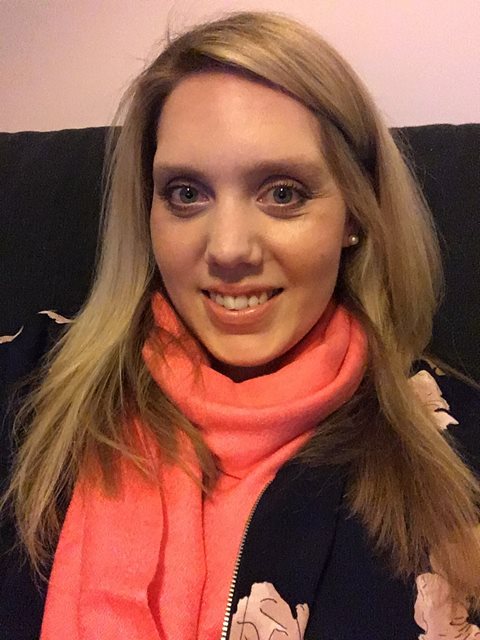
The famous scientific philosopher Thomas Kuhn said, “the answers you get depend on the questions you ask,” so if you’re not getting the answers, or audience engagement you want, maybe it’s time to take a look at the questions you’re asking.
The art of asking the right questions helps you to gain deep insights, support informed decision making and develop effective solutions to any challenges or plug information gaps. You might ask questions for data collection, tests or research, but it’s important to note that the questions you ask can have a huge impact on the results you get.
When it comes to asking your audience questions with a view to increasing engagement, there's several questioning tactics and question styles you can use, and we’ve detailed some below.
Build rapport and warm up with Icebreakers
Icebreakers should be easy questions that don't require too much thinking capacity. They might not be important from an informational point of view, but they have an important function for engagement. Our brain is highly social and thrives on interaction.
By starting a formalised meeting with light-hearted questioning, dopamine is released which lights up the sense of reward in the brain, encouraging this positive behaviour. Using a live polling tool to ask your icebreaker ramps up the interaction and excitement, increasing audience engagement even further.
Kick things off with:
- Who will win the match at the weekend?
- What is your favourite movie?
- How did you get here today?
Why not download our ready to use PowerPoint icebreakers to poll your audience with?
Ask open questions
Questioning, with a view to increasing engagement, becomes even more effective when you use open questions - especially good if you’re using a word cloud polling tool . Open questions prompt your audience to consider their personal opinions and beliefs in their response, bringing them closer to the subject matter and naturally increasing interest and audience engagement.
Get your audience to open up by asking:
- What has been your most memorable part of the day/session?
- What will you do differently as a result of this session?
- Describe your feelings about the proposed changes in one word...
Try the 5 W's
Basic though they may be, asking questions that begin with one of the five ‘W's will almost guarantee you an answer that isn't too taxing for the audience to come up with, perfect if you’re looking for data. Combine one of the 'W's with one of these other techniques and you'll amplify the effectiveness.
Why not try...
- Who, do you find inspirational?
- What, is your biggest challenge?
- When, do you feel most productive?
- Where, should we hold the next event?
- Why do you think (this resource/product/book/technique) is so popular?
You don't need to get too deep and meaningful with your audience but prompting them to reflect can be a powerful engagement tool for both you and them. Often, we all spend so much time looking forward, that we can forget to take a look back to find lessons or inspiration to help us acknowledge, grow, progress and continue to engage.
Ask your audience to ponder on these...
- What has held you back?
- Who has helped you the most with this project?
- What would you tell your younger self?
- How would you approach this differently now you have experience?
Make a statement, provoke a reaction
Rhetorical questions are often used by coaches or public speakers for effect, to get the audience thinking. Why do they work? Typically, rhetorical questions can be blunt or provocative, they can stop the audience in their tracks and prompt them to pay attention or re-engage if asked midway through a presentation or speech.
Rhetorical questions can also resonate strongly, as each audience member ponders the question in the context of their own reality, increasing the poignancy of the question.
How about asking...
- Why does this even matter?
- How do we overcome this?
- What does this say about who we are?
- Where do we go next?
Democratic decision making
We're huge fans of democracy (current politics aside) and nothing engages an audience more than the knowledge that their contribution affects the outcome. Whether you're hunting answers from your audience for the sake of data, to gauge opinion, or to actually make a real-life decision, the use of live-polling will get the crowds engaging.
Multi-choice polling is really effective and increases engagement by giving your audience a sense of autonomy over the decision at hand by providing them with the answers to choose between. Poll the audience with…
- How often should we hold these sessions? Weekly, monthly, annually?
- Where should we go for our next social outing? Pub/restaurant, mini golf, bowling?
- How is the room temperature? Too hot, Too cold, Just right?
So, now you’ve got 6 question types to try out and engage with your next audience. As a last piece of advice, an engaged audience is a natural bi-product if the information you’re sharing is interesting, relevant and the audience can learn something from you, or about themselves.
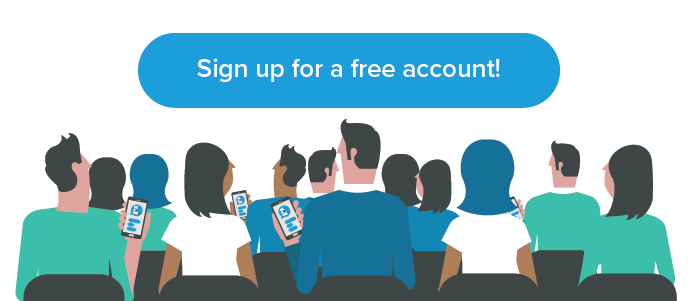
Related articles
From the blog.

10 Halloween facts that will shock you and your students

10 fun facts about working in higher education

30 fascinating facts about USA Universities
Presentation Skills Training - Online Public Speaking Courses | Rule the Room Today!
Rule the Room is here to help improve your presentation skills. Jason Teteak's custom training courses are perfect to improve your public speaking skills today!
Tips on How to Create Good Leading Questions

January 23, 2024 Jessica Teteak

One of the best ways to keep your audience engaged is to ask the right types of questions.
Recently, we were asked by a member of our Rule the Room Public Speaking Community to write a blog about how to create good leading questions.
I started to email the answer, and then I realized that this is a topic that all of you probably want to know.
Choose Your Questions Wisely
It’s not just about what types of questions are good questions.
Many of you have learned that.
It’s about how to CREATE those questions .
In general, there are four main types of questions you can use to Rule the Room.

Today’s blog is going to focus on how to create good leading questions and what it can mean for your next presentation.
A leading question is used whenever you want to help the audience understand (or “synthesize”) a challenging concept.
Put in simpler terms, it helps ensure your audience is “thinking” as you are presenting.
This thinking is also referred to as “synthesis” .
In Bloom’s Taxonomy , a classification of learning objectives, synthesis is defined as, “Compiling information in a different way by combining elements in a new pattern or proposing alternative solutions.”
A question that inspires synthesis accesses the right side of the brain.
A leading question that inspires synthesis and gets people to pay attention must meet the following criteria:
- There has to be a right answer.
- The audience has not yet been taught the answer.
- The audience can figure out the answer.
- The answer requires some thought.
For example, once I explain that the left side of the brain stores memories and the right synthesizes, I can ask…
“Which side do you think you access to come up with presentation topics?”
And the audience’s right brain will go to work on an answer.
The question meets all four of the criteria.
When I hear someone in the audience say, “Ooooooh,” I know the person has synthesized what the presenter is saying and arrived at an “aha!” moment.

Aha moments come when people have put together information that’s coming from you with what’s stored in their brains in a new way and then come up with an answer they can express in their own words.
When there is true understanding—and only then—synthesis is possible.
This is exactly what you want and will achieve when you create good leading questions.

When the audience members come up with the answer, they are learning.
When they are learning, you keep their attention.

Asking a question that requires synthesis is one of the most powerful ways to keep an audience’s attention, and good presenters are masters at doing that.
Below is a step-by-step guide to help you create a leading question using an example of Jason’s.

Step 1: Choose a concept or topic
Select something that is challenging to understand in your presentation:
My example: I’m talking about asking leading questions, so that’s my challenging topic.
Step 2: Choose a leading question candidate
Select one of the statements below that, if you were giving a test on this topic, you could use to help you find out if someone understands the concept or topic better.
1. “Explain what it means to…” 2. “Explain why…” 3. “Describe what the effect of…” 4. “Describe what the difference is between and ” 5. “Explain who can…” 6. “Describe where is coming from.” 7. “Explain when ” 8. “Explain when ” 9. “Describe what happens when…” 10. “Describe where/how ”
Did you notice that all of the ten candidates above implicitly contain the words “do you think”—for example, “Explain what [you think] it means to . . .”
A question containing that phrase either implicitly or explicitly prompts them to come up with an original answer based on what they have learned.
That’s powerful.
Rule the Room Public Speaking Extra
Access your Presentation Checklist
Learn how to create desire with irresistible takeaways and emotional hooks.
Click here to access the Presentation Checklist
The Ultimate Public Speaking Shortcut has finally arrived! Click here to join our community

Requiring synthesis will keep their attention.
My example: I would choose #8 above to test you to find out if you understood what happens when you ask a leading question.
Step 3: Add your topic
Simply attach your topic to the end of the leading question candidate you chose above.
My example: “Describe what happens when you ask leading questions.”
Step 4: Create your leading question
Turn the statement above into a question by removing the very first word of the statement and adding the worlds “do you think” to the statement to help form a question.
My example: “What do you think happens when you ask leading questions?”

Step 5: Ask the question at the right time
Ask this question sometime during your presentation after you have explained just enough that your audience can figure out the answer, but it still requires some thinking.
If someone in your audience answers your leading question incorrectly, it’s likely your fault.
You probably didn’t lead him or her enough.
Don’t correct the person; simply ask another question with a better hint.
If you get no response at all, you probably asked a leading question that is unanswerable or patronizing.
A leading question is unanswerable if any of the following apply:
It’s too complex or confusing.
Example: “What do you think the engineers at NASA were thinking thirty seconds before launch in 1997?”
How can you possibly know what the engineers were thinking?
There’s no single right answer.
Example: “Is everyone in agreement about this?”
The audience hasn’t enough information to come up with an answer.
If in retrospect you realize your question is unanswerable, then ask an easier leading question (give a bigger hint) or rephrase the question.
A leading question is patronizing if it’s rhetorical or obvious—for example,
“Do you think it’s important to wear a coat in cold weather?”
If you realize from the audience’s lack of response your question is rhetorical or obvious, quickly answer it yourself.
“Do you need to wear a coat in the winter? Of course!”
Continue as if you intended it to be rhetorical.
As you read this, you may think, I don’t ask silly questions, but I bet you do.
I would say three-quarters of the presenters we observe ask at least one question intended to be a synthesis question but that instead confuses or patronizes the audience.
This is dangerous because even if you do this only once, the audience members may stop listening .

Therefore, I suggest you prepare your questions in advance.
I hope this helps you to create leading questions of your own.
If you’d like to know how you’re doing, create a leading question and send it to us at [email protected], or post your question on our Facebook page .
About Jessica Teteak
Jessica Teteak is a contributor to Rule the Room Public Speaking. As a copywriter, editor and author she knows the power of finding your “voice” and words well spoken.
Jessica is an Energizer and a dynamic encourager. Her years spent coaching in Athletics, as a Fitness Professional and through Entrepreneurial ventures developed her holistic, unique approach to Public Speaking and Build Your Business Presentation Coaching.
Work with her ONLY if you’re ready to break the mold and lean more towards a “Jobs” presentation than a “Gates”. (And yes, she is Jason’s wife and coach.)
Strengths Finder: 1. Communication 2. Individualization 3. Activation 4. Belief 5. Woo
- Effective Presentation Skills Tutorial
- Handling Questions and Answers
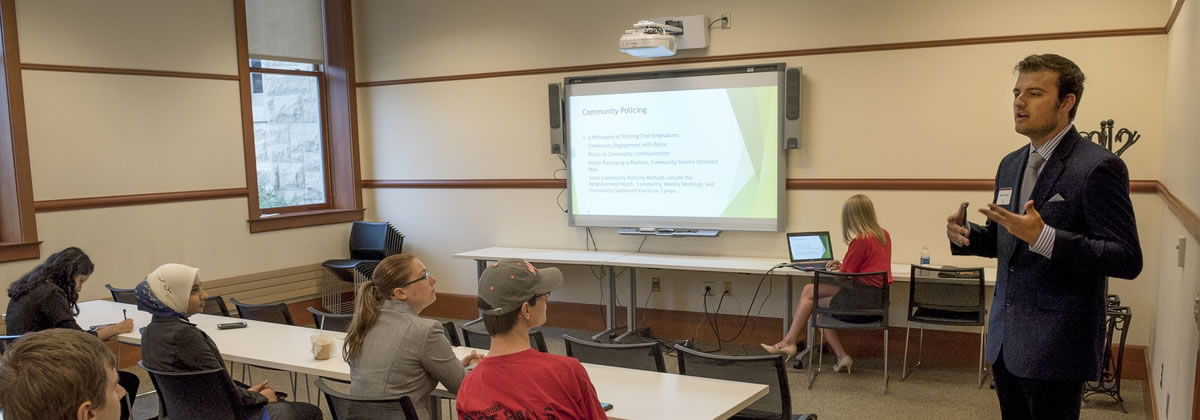
At the end of your presentation, if it is appropriate for the type of presentation, solicit questions from the audience.
Responding to Audience Questions
When someone is asking a question, make eye contact with that person, listen positively, and acknowledge by saying "thank you for that question," or say "that is an excellent question" or "that is an important question".
If the audience is in a large room and cannot hear each other's questions, repeat the question loudly for everyone to hear, before answering it.
If you know the answer to the question, respond appropriately and briefly so you can take more questions and not spend too much time on one question.
Effective Response to Question
This video clip is an example of a presenter effectively responding to an audience member's question .
Ineffective Response to Question
This video clip is an example of a presenter ineffectively responding to an audience member's question .
If the question is not relevant to the presentation, say something like, "I am really sorry that question is outside the scope of this presentation, but I will be happy to stay after the presentation and discuss it with you."
Effective Response to Off-topic Question
This video clip is an example of a presenter effectively responding to an off-topic question or one in which he or she does not know the answer .
Inappropriate Response to Off-topic Question
This video clip is an example of a presenter inappropriately responding to an off-topic question or one in which he or she does not know the answer .
If time is running out for answering all of the questions, say, "I am sorry. I am running out of time, but I will take one last question, and then I will be available at the end to answer any remaining questions."
If you do not know the answer to a question say, "That is an interesting question, and I will have to get back to you later on that" or ask the audience "Can someone help me with this?" or be gracious and acknowledge you do not know the answer at that time.
If an audience member criticizes or attacks what you had covered in your presentation, do not attack back, but separate the valid criticism from the personal attack, and respond to the criticism appropriately.
Some things not to do during the question and answer period:
- Shuffling papers or technology and not making eye contact with the questioner
- Belittling the questioner
- Calling those who want to ask questions by their physical characteristics
- Not taking questions in the sequence they are asked, but focusing on certain people or a side of the room
Asking Good Questions
If you are in the audience, know also how to ask good questions to indicate that you are following the presentation.
You can ask some general questions about any topic, and you may be genuinely curious about some things presented.
- What were the most challenging aspects, or what surprised you the most, in conducting this project?
- Why did you choose this particular methodology or argument instead of another one?
- How did you collect the data? Were there any problems in collecting data? What was the sample size?
- How did you validate your work? Did you validate with a real problem or situation?
- What are some of the limitations of your work?
- What recommendations do you have for further exploration in this project?
Learning to ask good questions at the end of a presentation demonstrates your active participation.
Previous
Take Quiz
- Preparing for the Presentation
- Organizing the Presentation
- Designing Effective Presentation Materials
- Rehearsing the Presentation
- Delivering the Presentation
- Presentation Skills Quiz
- Presentation Preparation Checklist
- Common Reasons for Ineffective Presentations


Your Guide to Last-Minute Presentation Prep
By paige kassalen.

When people ask me if I am nervous about giving a presentation, my answer is always “yes.” I like to joke that the only people who answer “no” are the people that you wish would be more nervous, and spend a bit more time preparing their remarks.
Being nervous about presenting doesn’t mean that you fear speaking in front of people. Often, I feel like I am nervous to present because I want to accurately and effectively communicate my message, and capitalize on the opportunity to have my ideas heard.
Speaking in front of a group of people is nerve-wracking enough, but what about when you are asked to give a last-minute presentation and can’t follow your usual preparation techniques?
If you have ever been stuck wondering “how will I ever prepare in time?” you can try this next time:
Rehearse the Story, Not the Words
Many times, when I prep for a presentation, I like to write down a script of what I, ideally, would like to say. This allows me to try out a few presentation flows, before finally deciding the best way to communicate my message. Unfortunately, when it’s crunch time, you don’t have this luxury.
When you have to make a last-minute presentation, you need to focus on the story and not the words. This is because it is much easier to start fumbling words than it is to completely forget the story you were trying to tell. Your goal with any presentation is to tell a story, so if you are conveying the main message, the words are not as important.
It is also helpful to invest the time to prepare a specific sentence to start and finish with. This helps you start the presentation off confidently, and then know exactly how to end things if you are rambling. You can think of it as adding bookends to your story.
Limit Yourself to a Few Key Points
Presentations are an opportunity to convey information, but trying to fit in as much information as possible will have inverse effects. This works to your favor when you have to give a last-minute presentation, because you reduce the amount you need to prepare. Instead of going broad on 10+ topics, you go deep on just a handful.
A good rule of thumb is assuming your audience will only be able to absorb around three key points before they get distracted or lose track of what has been said. So, when you have limited time, focus on knocking those three points out of the park, rather than trying to incorporate more content. Narrowing the scope of your presentation will reduce your stress during preparation and ensure your that audience walks away with your main messages.
Lean on Your Non-verbal Communication
As you’re prepping for a presentation, especially one that is in front of a large audience, remember that you have more in your arsenal than just the words you plan to speak. You have non-verbal communication, such as your facial expressions, emotion and confidence that can shine through.
Exuding confidence will ensure that your message comes across as authoritative. Engaging with your audience, and looking like you are enjoying being in front of the crowd, makes a big difference, too. Non-verbals can even act as a placebo and give you the courage and energy needed to make the rest of the presentation flawless.
As I said, presentations are hard enough, but when a presentation comes up last-minute, things get even more stressful.
We want to do a good job, and accurately communicate our messages, so we should remember to focus on the story and not the words, limit ourselves to a few key points, and lean on our non-verbal communication. These tips can help us leave a strong impression, and make our key points stick, while minimizing the stress we place on ourselves to deliver an impressive presentation.

Paige Kassalen
Monthly email newsletter.
This monthly newsletter notifies U.S. members and subscribers of new online content, news, products, services, and events from IEEE-USA and other OUs.
Subscribe Now →
Related Articles

On Networking Versus Relationship Building: Are You Staying or Just Passing Through?

How to Disagree Without Becoming Disagreeable

How to Respond Diplomatically When You Feel Like You’re Under Attack

Free Resources to Help You Prepare for the FE and PE Exams
Leave a reply cancel reply.
Your email address will not be published. Required fields are marked *


IMAGES
COMMENTS
100+ Questions to Ask After a Presentation. After a presentation, asking the right questions is key. It can help clarify what was shared, spark more discussion, and ensure everyone's on the same page. Whether you're the presenter or an audience member, knowing what to ask can make a big difference. But how do you know which questions are ...
30 Example Phrases: How to Conclude a Presentation. 1. "In summary, let's revisit the key takeaways from today's presentation.". 2. "Thank you for your attention. Let's move forward together.". 3. "That brings us to the end. I'm open to any questions you may have.".
Ask open-ended questions that invite the presenter or audience members to share thoughts and perspectives, thus fostering a more interactive dialogue. Final Thoughts And there you have it—a comprehensive guide to quenching your intellectual curiosity and contributing valuable insights after a presentation.
Beforehand, think through the types of questions audience members might ask. Put yourself in your shoes and ask yourself what concerns they might have about how your message impacts their job ...
But how you end it can make all the difference in your presentation's overall impact. Here are some ways to ensure you end powerfully: Way #1: Include a Strong Call-to-Action (CTA) Way #2: Don't End With a Q&A. Way #3: End With a Memorable Quote. Way #4: Close With a Story. Way #5: Drive Your Main Points Home.
1. Listen to the whole question. You don't have to answer a question immediately. Pause for a few seconds, actively listen to all parts of the question and think about the best way to answer. Frequently questions can change direction at the last moment, particularly if the questioner is thinking on their feet.
So try these tips to encourage questions: 1. PREPPING YOUR Q&A: > TIP THEM OFF EARLY: As you start your presentation, tell your audience: "I'll take all your questions at the end, so write down your questions as you think of them along the way.". That'll get them active thinking of questions throughout your presentation.
2. Ask others what they might ask after your presentation. A beneficial way to determine the questions your audience might have is to ask individuals you know who are similar to your expected audience what their questions are about your topic. Consider discussing potential questions with people you know who work in a similar field or position.
Here are 8 tips to help make them through: 1. Pitch your presentation at the right level for your audience. The first stage of questions is birth - they have to be born in your audience's mind. If your presentation is too simple for the level of knowledge in your audience - it's all material they've covered before - they won't ...
The Question & Answer (or Q&A) session happens at the end of your presentation—audience members are free to ask you questions about your content and your ideas, and you have the chance to show how well you know your research. ... List the tough questions someone might ask, especially the one you don't want people to ask.
Q&A questions, short for "Questions and Answers", are inquiries posed by an audience or participants to the speaker or presenter during the Q&A session of a presentation. This Q&A segment typically follows a presentation, a talk or a lecture, providing the opportunities for the audience to seek clarification, ask additional information, or ...
Be prepared to tell the audience a little bit about how you might progress. Think about what you want to say before the question is asked and make a structure of the points you want to say, so you don't leave out anything important. Use our free worksheet "Questions I should be ready to answer" to help you. 2.
Let people ask questions throughout your presentation. take all questions at the end. Each method has pros and cons. If you go with interactive questions for your presentation, and take them throughout, it's easy to tell when your audience is engaged. That's affirming, and you also won't have to remember to come back to a topic later.
Effective endings. To be truly effective, take questions and then finish with a closing that is as powerful as the beginning of your presentation. Here are three techniques for creating a ...
Ask open questions Questioning, with a view to increasing engagement, becomes even more effective when you use open questions - especially good if you're using a word cloud polling tool . Open questions prompt your audience to consider their personal opinions and beliefs in their response, bringing them closer to the subject matter and ...
My example: I would choose #8 above to test you to find out if you understood what happens when you ask a leading question. Step 3: Add your topic. Simply attach your topic to the end of the leading question candidate you chose above. My example: "Describe what happens when you ask leading questions." Step 4: Create your leading question
At the end of your presentation, if it is appropriate for the type of presentation, solicit questions from the audience. Responding to Audience Questions When someone is asking a question, make eye contact with that person, listen positively, and acknowledge by saying "thank you for that question," or say "that is an excellent question" or ...
When people ask me if I am nervous about giving a presentation, my answer is always "yes." ... and then know exactly how to end things if you are rambling. You can think of it as adding bookends to your story. Limit Yourself to a Few Key Points. Presentations are an opportunity to convey information, but trying to fit in as much information ...